Direct Freight Express Hit the Ground Running

Carrier: Gibson Sand & Gravel Feature: Cropline Group Showcase: Service, Parts & Aftermarket Personality Profile: Tom Chapman
INNOVATION
Fleet: Alpine Truss
Telematics: Burdetts Group
Test Drive: Kenworth K220
Delivery: Last Mile Logistics Funds

MAGAZINE Delivery Magazine inside: Pages 74-81. ® August 2023 ISSN 1838-2320 9 771838232000 07 AUGUST 2023 $11.00 THE PEOPLE & PRODUCTS THAT MAKE TRANSPORT MOVE INDUSTRY
Don’t do your truck a disservice.

















Congratulations. You made a very wise business decision by choosing an Isuzu truck. Now keep that smart approach going and protect your investment by having it serviced at an Isuzu-approved workshop. Our highly trained technicians use genuine parts designed specifically to help your truck deliver its very best performance. You’ll also protect your future re-sale value. Plus, you’ll have the peace of mind knowing that you’re helping to meet your chain of responsibility requirements.
To find your nearest Isuzu Service Centre, visit isuzu.com.au Care. It’s what we do.














































































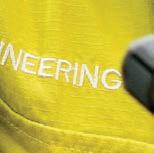










FSA/ISZS1662
MEET THE TEAM
Australia’s leading truck magazine, Prime Mover, continues to invest more in its products and showcases a deep pool of editorial talent with a unique mix of experience and knowledge.


Christine Clancy | COO

With more than two decades of experience as a media professional, Christine has worked in newsrooms across Canada, Vietnam and Australia. She joined the Prime Creative Media team 12 years ago, and today oversees more than 43 titles, including a dozen print and digital transportation titles. She continues to lead a team that focuses on continuous improvement to deliver quality insights that helps the commercial road transport industry grow.
William Craske | Editor
Over the past two decades William has published widely on transport, logistics, politics, agriculture, cinema, music and sports
He has held senior positions in marketing and publicity for multinational businesses in the entertainment industry and is the author of two plays and a book on Australian film history. Like many based in Melbourne he is in a prolonged transition of either returning or leaving.
Peter Shields | Senior Feature Writer
A seasoned transport industry professional, Peter has spent more than a decade in the media industry. Starting out as a heavy vehicle mechanic, he managed a fuel tanker fleet and held a range of senior marketing and management positions in the oil and chemicals industry before becoming a nationally acclaimed transport journalist.
Louise Surette | Journalist

Louise joins Prime Mover after nearly 25 years as a writer. Starting her career as a reporter at the Toronto Star, she has spent much of the last 15 years as a design writer and editor. In 2020, she was shortlisted on the Richell Emerging Writers Prize list. Originally from Nova Scotia, she lives in Melbourne with her two children.
Peter White | Journalist

Peter has completed a Bachelor of Media and Communication (Media Industries) degree at La Trobe University, and he brings a fresh perspective to Prime Mover. He gained valuable experience at Upstart, La Trobe’s newsroom, work that has been supplemented by direct industry experience in a Council placement. Peter has a strong interest in commercial road transport, and in contributing to Prime Mover’s efforts in growing the industry.



Ashley Blachford | Business Development Manager
Handling placements for Prime Mover magazine, Ashley has a unique perspective on the world of truck building both domestically and internationally. Focused on delivering the best results for advertisers, Ashley works closely with the editorial team to ensure the best integration of brand messaging across both print and digital platforms.
www.primemovermag.com.au
ceo John Murphy john.murphy@primecreative.com.au editor William Craske william.craske@primecreative.com.au managing editor, Luke Applebee transport group luke.applebee@primecreative.com.au senior feature Peter Shields writer peter.shields@primecreative.com.au
business Ashley Blachford development ashley.blachford@primecreative.com.au manager 0425 699 819
art director
Blake Storey blake.storey@primecreative.com.au
design Kerry Pert , Louis Romero, Tom Anderson
journalists
Peter White peter.white@primecreative.com.au
Louise Surette louise.surette@primecreative.com.au
design production
Michelle Weston manager michelle.weston@primecreative.com.au
client success Salma Kennedy manager salma.kennedy@primecreative.com.au
head office 379 Docklands Drive, Docklands VIC 3008 enquiries@primecreative.com.au
subscriptions 03 9690 8766 subscriptions@primecreative.com.au
Prime Mover magazine is available by subscription from the publisher. The right of refusal is reserved by the publisher. Annual rates: AUS $110.00 (inc GST). For overseas subscriptions, airmail postage should be added to the subscription rate.
articles
All articles submitted for publication become the property of the publisher. The Editor reserves the right to adjust any article to conform with the magazine format.
copyright
PRIME MOVER magazine is owned and published by Prime Creative Media. All material in PRIME MOVER magazine is copyright and no part may be reproduced or copied in any form or by any means (graphic, electronic or mechanical including information and retrieval systems) without written permission of the publisher. The Editor welcomes contributions but reserves the right to accept or reject any material.
While every effort has been made to ensure the accuracy of information
Prime Creative Media will not accept responsibility for errors or omissions or for any consequences arising from reliance on information published. The opinions expressed in PRIME MOVER magazine are not necessarily the opinions of, or endorsed by the publisher unless otherwise stated.
Direct Freight Express Hit the Ground Running Delivery Magazine inside: Pages 74-81. AUGUST 2023 primemovermag.com.au ® August 2023 THE PEOPLE & PRODUCTS THAT MAKE TRANSPORT MOVE Feature: Cropline Group Personality Profile: Tom Chapman Fleet: Alpine Truss Telematics: Burdett’s Delivery: Last Mile Logistics Funds
THE POWER TO SAVE ON FUEL AND EMISSIONS.

THAT’S ANOTHER HINO
UP TO 20% * IN FUEL AND EMISSIONS REDUCTIONS WITH AUSTRALIA’S ONLY SELF-CHARGING HYBRID ELECTRIC TRUCK.
The Hino 300 Series Hybrid Electric utilises an electric motor and a diesel engine working in parallel, intelligently switching between the two or a combination of both - to boost efficiency. Maximum torque generated at very low rpm minimises fuel use resulting in a reduction in carbon emissions. And as the Toyota Group hydride nickel battery automatically recharges whilst on road during operations, there are no recharging requirements. That’s the power of change, that’s the Hino Hybrid Electric. Visit hino.com.au

XAVIER_HINO38956.15
*Actual results will vary depending on the application of the vehicle and how it is driven.
COVER STORY



“We try to keep everything the same so we’re not carrying spare parts of everything – the less models, the less brands, the better.”
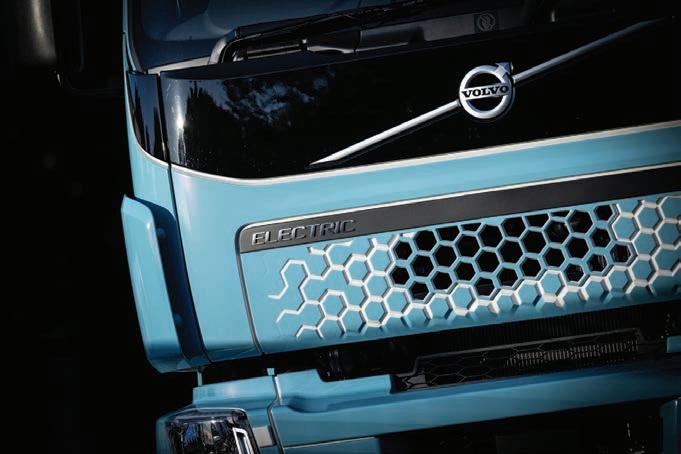


CONTENTS Prime Mover August 2023 70 32 52
54 72
Prime Feature
FLEET FOCUS
32 Hit the Ground Running
As one of the largest independently owned transport companies of its kind, Direct Freight Express reinforces the formidable national footprint it has forged with modern trucks from key supplier, Isuzu.

38 Persistence of Vision
Sunshine Coast carrier, Gibson Sand & Gravel, is one of three fleets in Australia asked to give a 12-month appraisal of the new Western Star 48X.
42 Through the Roof
Alpine Truss uses its own fleet of Mack trucks to deliver roof trusses and wall frames from its manufacturing facility in Wangaratta.
TRUCK & TECH
46 Access All Areas
Several new Freightliner Cascadia units have won favour with the team at Burdett’s in Melbourne owing in part to the clear gains shown by the sophisticated Detroit Connect telematics.


Running two transport businesses at once may be difficult at times, but Cropline Group has found SAF-Holland components across a large portion of both its fleets has made the process much more seamless.
TEST DRIVE
66 Home Grown
An interstate trip from Melbourne to Adelaide pulling a pair of Collins Transport refrigerated trailers proves a breeze for the new Kenworth K220.
Regular Run 08 From the Editor 10 Prime Mover News 30 Mindset 56 Service, Parts & Aftermarket Showcase 70 Personality Profile 72 Prime Movers & Shakers 74 Delivery 82 ARTSA-I Life Members 84 Truck Industry Council 85 Victorian Transport Association 86 Peter Shields’ Number Crunch
STORIES PERSISTENCE OF VISION 38
William Craske Editor

It’s time to talk rigids — rigid airships that is. It’s been more than a century since the modern airship transformed transatlantic travel, using fuel cell technology, that at least for the moment, is very much back in vogue. Today considered unique in terms of their variety of potential applications, fuel cells can use a wide range of fuels and feedstocks including hydrogen which is being afforded some particularly optimistic forecasts by those, namely OEMs, with skin in the game. Of the concepts long-gestating in closed-door research departments shrouded in secrecy for months, if not years, how many hark back to previous eras when the political capital necessary for high-cost ventures of research and development, had simply run dry?
The Zeppelin, which came to be commonly used to refer to all rigid airships, were first flown commercially in 1910 by Deutsche Luftschiffaharts, the world’s first airline in revenue service. By 1928, when a round trip transatlantic ticket cost $3,000 – equivalent to $40,000 today – the Graf Zeppelin was launched and soon set a new long-range voyage record in October. The largest airship of
Deep Fakes
its kind at 236.6 metres in length, it was designed to carry passengers, and mail to cover the costs. In another first, the Graf Zeppelin used Blau gas fuel for its five engines. As Blau gas, like propane, is nearly as light as air, it gave the Graf Zeppelin the advantage of not having to vent lift gas, a practice common to other airships, to maintain equilibrium. The ship’s range, as a result, was extended by 30 hours.
Blau gas was carried in 12 cells in the lower section of 12 of the ship’s 17 gas cell bays, beneath the hydrogen cells also known as the “lift gas cells”. The ship also carried a supply of gasoline, so that if the ship was heavily burdened, the engines could burn gasoline instead of Blau gas, alleviating the weight without the need to drop ballast.
By August, the Graf Zeppelin had completed a circumnavigation of the globe leaving Lakehurst, New York, at the behest of newspaper magnate William Randolph Hearst, one of its chief sponsors, before it took in Friedrichshafen, Tokyo, Los Angeles and returned to Lakehurst 21 days, five hours and 31 minutes later. It had travelled 49,618 kilometres. On board was reporter, Grace Marguerite Hay Drummond-Hay, who, by default, was the first woman to circumnavigate the globe by air.
In 1929, a group of investors erecting the Empire State Building, had announced that the height of the building would be increased by 200 feet so that a mooring mast for airships could be installed. Passengers, according to the plan, would exit the airship down a gangplank, and a mere seven minutes later could be on the street, ready to experience everything Manhattan had to offer. Up until then the Chrysler Building had been the tallest building in the world. The New York Times was the first to dismiss the project as impractical, noting that landings for zeppelins required dozens of ground
crew, not to mention hundreds of metres of rope. “The notion that passengers would be able to descend an airport-style ramp from a moving airship to the tip of the tallest building in the world, even in excellent conditions, beggars belief,” noted the Times. A sepia tea-stained photo of the Graf Zeppelin, which had been earmarked to dock on the building, was circulated in 1930, despite it never having done so. As a deep fake, it was something of another first.
The following year an airship did dock on top of the Empire State Building. No one, however, disembarked. The privately owned dirigible, amid 65 km/h gusts, brought traffic to a standstill for half an hour as “the pilot jockeyed for position in the half-gale about the tower 1,200 feet above the ground,” reported the Times The age of the airship came to a crashing halt in a New Jersey field in 1937 when the Hindenburg, the largest zeppelin ever constructed, fuelled by flammable hydrogen, immolated upon landing. In principle, zeppelins were a technology ordained by the few for the many that proved, like most trends, the reverse. As many people would have travelled on fixed wing aircraft as paying passengers as those on airships in one tenth of the time it took for the few thousand intrepid voyagers fortunate enough to take in the world from the unique vantage of a ‘giant of the air’. It remains, to this day, a fascinating point in history unlikely to be replicated.
But the age of digital swarms, bots and ChatGPT, is also the age of replicants. In economies starved of new ideas, everything old can be made new again with the right political clout, humanitarian messaging and cultural amnesia.

8 August 2023
PERFORMANCE AND ECONOMY

no compromise
Detroit’s DD16 delivers all the power you need.

With up to 600 horsepower and 2,050 lb-ft of torque, the big bore workhorse provides efficient and dependable power and performance without compromise. Detroit’s advanced technology also means GHG17 requirements are met through innovative fuel efficiency resulting in lower emissions.
This power, performance and efficiency prowess is backed by our industry-leading warranty and extended coverage packages that ensures the highest level of support for our customers.
Combined with superior fuel economy and the absence of a midlife change out, the DD16 delivers an enviably low total cost of ownership and maximum uptime.
This is all backed by our well-established and extensive national service and support network which, together with our highly skilled factory-trained technicians, means you can count on getting the right advice when you need it.
With Detroit, there’s no compromise.
detroitanz.com detroitanz
> Auswide Transport Solutions introduces first PBS B-triples
National transport company, Auswide Transport Solutions, has commenced its first Performance-Based Standards (PBS) B-triple roadtrain combinations between Melbourne and Adelaide and its first AB-triples between Adelaide and Perth. The units will carry predominantly parcel freight for its customers around Australia, as well as general freight and overnight express. The combinations join the fleet’s growing 500-plus compatible trailer units.
While the company has been running east-west roadtrain triples for several years, Auswide Transport Solutions CEO, Tom Pausic, told Prime Mover these units will give the fleet greater

flexibility on the east coast.
“They’re akin to what we’ve already been doing, but it’s just a new corridor for us,” he said. “So far they’ve been working really well.”
Along with bringing Auswide Transport Solutions a 30 per cent reduction in carbon production, General Manager, Gabby Singh, told Prime Mover the B-triples will benefit its customers especially when it comes to the eastwest trek.
“Efficiency gains will have a positive bottom-line effect for our customers, and it will also benefit them by contributing to carbon reduction,” he said. “The number of available drivers has been a concern of industry for
some time. Moving more freight with less trucks during peak times means fewer heavy vehicles on the road and reduces the wear on our nation’s infrastructure.”
The combinations are already demonstrating higher productivity and greater efficiency for Auswide Transport Solutions’ operations. According to Singh, plans are in place to extend the PBS fleet even further. “Melbourne and Adelaide has started and Sydney to Adelaide will commence in the near future,” he said. “We expect the presence of PBS combinations on our roads will become increasingly more common as benefits are realised.”

PRIME NEWS 10 August 2023 PRIME NEWS
One of the recently unveiled Kenworth B-triple sets.
Easily Retrofit to the Popular HOLLAND
FW351E & FW331
Fifth Wheel
FLASHING RED WARNING LED LIGHTS FOR FAILED COUPLING ATTEMPT
HIGH INTENSITY WHITE LED LIGHTS FOR SUCCESSFUL COUPLING ATTEMPT
helps drivers GET IT RIGHT!

FAILED COUPLING – In the case of a failed coupling attempt, bright red flashing LED lights assist the driver to quickly recognize a potentially costly mistake.


SUCCESSFUL COUPLING – A successful couple triggers highintensity white LED lights, strategically aimed at the kingpin and lock for enhanced visibility during the inspection process, especially in poor weather and low-light conditions.
Robust electrical components: sealed one-piece harness, long-life LED lights, durable inductive sensors, and steel encased logic module ensure reliable operation in the toughest conditions.

SAF-HOLLAND (Aust.) Pty. Ltd

ABN: 79004371215 | Sales: 1300 131 613

Email: sales@safholland.com.au

www.safholland.com.au

> Lindsay Australia makes $34M acquisition
Lindsay Australia has acquired merchandise company, WB Hunter, for $34.6 million. Founded in 1947, WB Hunter is a market leading retailer that provides a comprehensive range of rural supplies, agricultural services, trade essentials and pet products with an eight-store footprint across Victoria and New South Wales. The acquisition will directly contribute to Lindsay’s broader strategic direction by providing a range of complementary products and services to its extensive customer base.
Lindsay will also utilise WB Hunter’s network to further expand into the Victorian and NSW agricultural supply markets. This broadened operating footprint is expected to offer a robust platform for Lindsay to pursue growth opportunities across all service lines.
Lindsay Acting CEO, Craig Baker, commented on the acquisition.
“We are delighted to welcome WB Hunter into the Lindsay network,” he said. “WB Hunter has a longstanding and highly successful operating history, serving as an integral member of
>NatRoad issues survival guide
National Road Transport Association members have been given a sevenstep guide to weathering the current economic winter following a wave of price hikes from 1 July.
NatRoad CEO Warren Clark said his organisation was recommending strategies to navigate the challenges being thrown at the road transport industry and they involve pre-planning and managing relationships.

“There’s never been a more important time to be on good terms with your employees and customers,” said Clark. “You can’t do much directly about things like diesel prices – apart from using our Ampol discounts if you’re a NatRoad
Member because they’re the best available – but you can look at your own business, no matter how large or small. Clear communication with customers and employees, according to Clark, is not a ‘nice to have’ in tough times but a ‘must’.
“We’re facing a very complex business environment but our industry is nothing if not resilient,” he said. “Our Seven Step Survival guide provides some broad principles to staying afloat and our advisors are always on hand to answer specific questions from Members.”
Clark said operators should regularly update clients about the changes in operating costs and how they affect the
> ALRTA appoints new Executive Director
The Australian Livestock and Rural Transporters Association of Australia (ALRTA) has announced the appointment of Rachel Smith as its new national Executive Director. The appointment was made by ALRTA National Council following an extensive talent search and selection process. Smith, according to ALRTA President Scott McDonald, is the right person to carry on the ambitious work program of the association.
“ALRTA has a long history of punching above its weight across an ambitious work program,” he said. “I believe that
Rachel has the right mix of skills and experience to continue that tradition. I congratulate her on the appointment and look forward to working closely into the future.”
Smith has previous transport association experience. She worked for the Australian Logistics Council as Head of Government and Policy and served for a brief period as interim CEO. She has also worked for Australian Pathology and the Pharmacy Guild of Australia, bringing extensive experience in policy development, advocacy, government relations, member services,
Australia’s rural supplies market.”
Following the completion of the acquisition, Lindsay Rural will have a consolidated rural merchandising network across Australia’s east coast. Lindsay Rural represents a key component of Lindsay’s end-to-end food supply chain solution, supplying more than 1,500 farmers with an extensive range of agricultural products including packaging, fertilisers, chemicals, nutrients and irrigation equipment across a network of 21 stores.
pricing of services.
“We are recommending operators provide a detailed breakdown of costs to clients to help them understand where increases are coming from, such as fuel costs, insurance charges or wages,” he said. “This can help in negotiations as it shows the business is not arbitrarily raising prices.”
Clark said investing in efficiency improvements could help reduce operating costs.
“This could include more fuel-efficient vehicles or optimising routes using routing software, but when seeking efficiencies it’s important not to compromise safety,” he said.
projects, business development and management.
Smith said she is looking forward to the challenge of representing the interests of the livestock and rural transport sector, including the six state member associations compromising the federation.
“I am thrilled to return to the transport and logistics sector to advocate for outcomes that will advance the interests of ALRTA members to government and the wider Australian community and look forward to working with the membership,” she said.
PRIME NEWS PRIME NEWS 12 August 2023
Heavy loads All-electric
Our heavy-duty electric truck range is designed to minimise CO2, noise and air pollution. It’s a new driveline, but with the same high standards for quality, safety and flexibility that come with every Volvo truck. So, if you are looking for ways to lower your environmental footprint, we have a solution for you.
Volvo Trucks. Driving Progress

> Viva Energy secures ADF fuel supply contract



A new contract executed with the Department of Defence will see Viva Energy Refining supply aviation, marine and ground fuel to the Australian Defence Force (ADF).
The Fuel Supply Contract is for an initial six-year term which may be extended to 12 years. It will see Viva Energy play a key role in underpinning Australia’s national security through supply of fuel to the ADF both locally and internationally.
As part of the deal and as an important Australian Industry Capability activity, Viva Energy will resume production at Geelong Refinery of F-44 (Avcat) or JP-5, a military specification aviation turbine fuel used on aircraft carriers. Currently, this high-flash jet fuel is manufactured and imported from overseas.
The scope of the contract will see Viva Energy supplying fuel to all Defence Fuel Installations (DFIs) around Australia and the RMAF Base Butterworth in Malaysia. Viva Energy will also be responsible for fuel supply to ADF

aircraft and vessels at all commercial airports, ports and marinas in Australia and around the world.




Viva Energy CEO and MD Scott Wyatt said the agreement expands Viva Energy’s important role in fuel security and extends its strategic relationship with the ADF. “This is a significant contract for both our Refining and Commercial & Industrial businesses,” said Wyatt.
“We are delighted to extend our strategic relationship with the Commonwealth and look forward to supporting the ADF’s Australian and international fuel requirements as a key enabler of their capability,” he said. “The resumption of local manufacturing of F-44 (Avcat) at Geelong Refinery is a highlight, reinforcing our commitment to the nation’s energy security.”
The announcement also builds on Viva’s project to construct 90 million litres of diesel storage tanks on the site, due for completion in 2024.
Under the contract Viva Energy would work with the ADF on energy transition
and renewable fuels the company said in a statement.




“I would like to thank the Commonwealth for its confidence in Viva Energy and look forward to successfully implementing this contract and delivering a safer, simpler and more assured Defence Fuel Supply Chain in collaboration with the ADF,” said Wyatt. Minister for Defence Industry, Pat Conroy, said the Federal Government was proud to be supporting Australian industry and jobs rather than importing Specialist Military Aviation Fuel.
“Coming after years of declining local oil refining and fuel production, this will be good for Australia’s defence, good for Australia’s energy security and good for Australian jobs,” said Conroy. “We are really pleased about the difference this will make in the regional centre of Geelong in Victoria. The Government is working hard to build a resilient fuel supply for Defence and to strengthen Australia’s national security — and this domestic fuel supply contract will contribute to this.”
PRIME NEWS PRIME NEWS
14 August 2023
A RAAF C17 Globemaster is refuelled by Viva Energy.
































































































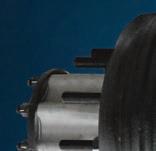











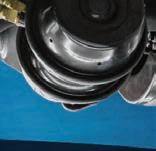






THE NEW D 190 FULL TIME PUMP HAS ARRIVED For more information contact Dana on 1300 00 DANA or visit us at www.Dana.com.au Strength • Power • Endurance ENGINEERED & BUILT IN AUSTRALIA
> Toll adds 30 new UD Quons
The supermarket arm of logistics powerhouse, Toll Group, has taken delivery of eight new UD Quons. These are the first units in an order of 30 trucks to service the Woolworths site at Minchinbury for deployment across the Sydney metropolitan area.

The Euro 6 UD Quon GW460 is powered by an 11-Litre engine delivering up to 460hp and 2200Nm of torque. It is paired with an ESCOTT-VI transmission.
A TN360 Teletrac Navman telematics system in the vehicles provides the capability of operating as an electronic work diary in the future and will accommodate other projects Toll is working on as it moves to a more digital environment according to Mark Haworth, Toll Operations Support Manager.
“We have also added the Seeing Machines Guardian DSS system in the trucks which detect driver fatigue
and driver distractions, alerting the driver to these events, as well as alerting supervisors of these events, of which fatigue events are acted upon immediately,” he said.
The Guardian technology has been at the forefront of the fleet for detecting fatigue and distraction related events. Other standard safety features in the truck include Traffic eye cruise control, lane departure warning system, and UD’s own stability system.

These new UD Quons will form part of Toll’s fleet, along with 2022 MercedesBenz Actros prime movers, presently in service for over 200 Woolworths stores in the Sydney Metropolitan area. According to Haworth, reliability, servicing, fuel economy, and a driverfriendly interface are a cut above on the new UD Quon. There are other immediate benefits, too, that have been relayed by the drivers.
“Definitely the turning circle, for getting into and onto loading docks,” says Haworth.

“This is a crucial aspect of the truck.
“The JOST JSK-42 Air Release Turntable, which we run already, but again is proving beneficial for the drivers,” he adds.
Visibility when in the truck, as one driver David Andrew relayed via Haworth, is also outstanding.
“All the blind spots are covered which is important when travelling in Sydney traffic,” he said.
“In cab safety features are less intrusive, cruise control works well and driver comfort is very good.”
The new Teletrac Navman systems are being introduced for the first time at Toll Minchinbury.
“All our new trucks will have it added, [it’s] much easier to use and a lot more driver-friendly,” said Haworth.
PRIME NEWS PRIME NEWS 16 August 2023
IN THIS BUSINESS, YOU NEED THE BEST TO SUCCEED
With Caltex Delo’s ISOSYN Technology, fleet owners and drivers can rely on extended service protection, maximised engine durability and minimised operating costs.

Talk to your local distributor or find out more about Caltex fuels and lubricants. www.caltex.com/au/business-solutions

> Carey’s Freight Lines unveils special edition Actros
Tamworth’s Carey’s Freight Lines has taken delivery of Australia’s first Actros 25 Driver Edition. The special edition model was developed locally to celebrate the 25th anniversary of the Mercedes-Benz Trucks Actros being introduced in Australia.
Carey’s Freight Lines Managing Director, Darren Carey, first put his hand up for one of the limited-run Actros trucks at the Brisbane Truck Show in May. The unit was delivered recently by Mavin Truck Centre salesman, Steve Pinkstone.

The first Actros debuted with the Carey’s Freight Lines fleet in 2017. Since then, the company has purchased 18 units of the 2663 model. According to Carey, the Actros has been a solid and reliable performer for the company.
“Right from the start, the Actros has given us great fuel economy and we also appreciate the safety features and the comfort,” he said. “The acceptance
welcome addition to the fleet said Carey. “It looked good on the stand, but it looks even better in the metal, in our yard with our trailers,” he said. It features a grey metallic paint scheme matched with Alcoa Dura-Bright wheels and a raft of upgrades that ensure it stands out on the highway.
The Actros 25 Driver Edition features the Gigaspace cab, which is taller and provides more headroom and space for front-mounted cabinets above the windscreen. One of these cabinets includes a microwave. On the rear wall of the cab, there are two beds including a fixed bed at the bottom and folding bunk at the top. Below the bottom bed are twin fridges that are within easy reach of the driver.
Mercedes-Benz Trucks Vice President, Andrew Assimo, is thrilled the milestone truck is joining the Carey Freight Lines fleet.

“The special edition Actros 25 Driver Edition is full of features that drivers
said. “Carey’s Freight Lines is known for its well-presented trucks, its customer dedication and safety-first approach and is a wonderful brand ambassador for Mercedes-Benz Trucks.”
Carey’s Freight Lines dates back to 1947, when Harold Carey bought his first truck after returning from World War II.
Having bought the company in the 1980s, his sons, Mick and John, grew the business. Now, Harold Carey’s grandsons Darren, Todd and Rick have assumed control of the business.
The Actros 25 Driver Edition is a 2663 that features the top-of-the-line 630hp 16-litre six-cylinder OM473 engine linked to the latest generation 12-speed Automated Manual Transmission (AMT). It also comes with the Predictive Powertrain Control system, which uses topographical information, including pre-mapped three-dimensional GPS data, to enable the truck to make the best, and most economical, choice of
This includes saving fuel by coasting for Darren Carey.
PRIME NEWS PRIME NEWS

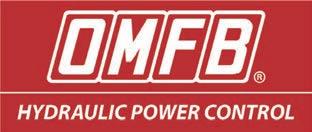
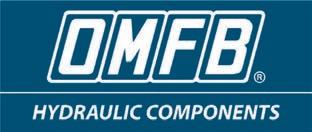


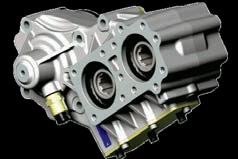
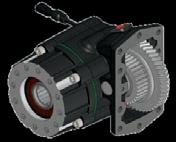


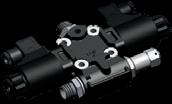



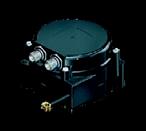

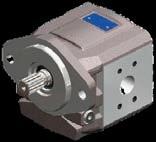


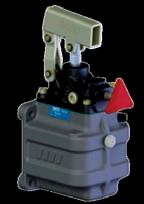


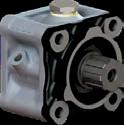

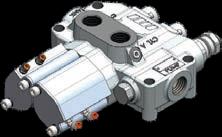


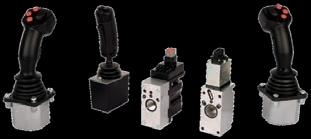

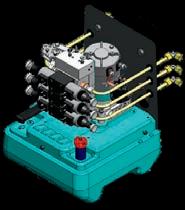

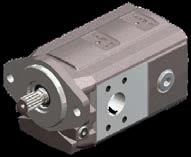




ONE COMPANY, A FULL RANGE Transport Hydraulic Solutions • Power Take-Offs • Gear & Piston Pumps • Control Valves • Controls • Oil Tanks • DC Powerpacks • Hand Pumps • Winches • Underbody Hoists Mobile Hydraulic Solutions • Load Sense Pumps • Gear & Piston Motors • Proportional Directional Valves • Control Systems • Joysticks • Sensors Backed by dedicated local product support and expert technical knowledge, we’re focused on providing the most durable solution for your on-road or mobile application. OMFB Pacific Pty Ltd 29 Trevi Crescent, Tullamarine VIC 3043 Ph. 1300 040 600 | www.omfbpacific.com.au
> Industry bodies’ first update on coupling strength report


The first update on an investigation into dynamic loads on couplings fitted to heavy High Productivity Freight Vehicles (HPFV) and PerformanceBased Standards (PBS) combinations has been released. Led by the ARTSA Institute (ARTSA-i), Australian Trucking Association (ATA), Truck Industry Council (TIC) and Heavy Vehicle Industry Australia (HVIA), the coupling safety project is funded by the National Heavy Vehicle Regulator’s (NHVR) Heavy Vehicle Safety Initiative (HVSI) and supported by the Australian Government.

The project’s objective is to address the knowledge gap surrounding coupling forces experienced in roadtrains with a Gross Combination Mass (GCM) above 125 tonnes.
ARTSA-i Chair, Martin Toomey, said the project has conducted extensive onroad testing of high GCM combinations to enhance industry understanding of the dynamic forces experienced by fifth wheels and pin couplings, and
a tri-axle ‘test dolly’, to which 14 load cells were fitted beneath the fifth wheel and a further six mounted directly behind the tow eye, within the customdesigned drawbar manufactured by CIMC.
Northern Territory-based bulk fuel transportation specialist, Direct Haul, partnered with the project to facilitate the on-road testing between Darwin, Katherine and the surrounding areas. The test route covered a broad range of road conditions and speeds, both laden and unladen, including highspeed sections and rough roads with demanding conditions featuring hills, cattle grids and flood crossings. For each test run, the test dolly was placed in a different position within the BAA and AAB Quad combination to allow the coupling forces in the front, centre and rear positions to be recorded along the 473km test route.

Preliminary results showed that there are two major types of events that contribute to the life of a coupling.
constantly and less common large force events, stemming from low-speed shunting events within the combination when coming to a stop and high-speed rough road events.

The results found that coupling location within the combination and the road profile affects the forces transmitted through the coupling, with positions closer to the front of the combination typically seeing higher longitudinal forces. Using data obtained from the on-road testing, Smedley’s Engineers are developing a computer simulation that replicates the vehicle combination and road conditions of the physical test, enabling further testing and investigation of coupling forces to be carried out in a repeatable and costeffective environment. According to ARTSA-i, preliminary simulations of the virtual combinations travelling through recreated sections of the test road are promising.
The project is expected to be completed in the coming months, with



PRIME NEWS PRIME NEWS 20
Direct Haul quad combination.
Care. It’s what we do.


























At Isuzu, we’ve always taken great care of our customers.
We’re Australia’s number one truck… an honour we’ve held for over three decades.

That means more businesses put their trust in us than any other truck brand.












We understand that reputations are riding on us and that’s why Isuzu Care is more than just an aftersales service package.



It’s part of our DNA.


From day one, we support customers and demonstrate that reliability is everything. We pride ourselves on being proactive and always going the extra mile.







And as we look to new frontiers, we’re finding new ways to help our customers exceed their goals.







Isuzu Care is what sets us apart. Always has, always will.












FSA/ISZS1660
> Autonomous truck convoy milestone for Australian Army

The Australian Army successfully operated an autonomous truck convoy on a public road for the first time earlier this year. The National Transport Research Organisation and Deakin University supported the leader-follower trial on 6 June, in which a convoy of four autonomous Army trucks followed a crewed ‘leader’ vehicle on a public road in Victoria. Colonel Robin Smith, of Army’s Future Land Warfare Branch, said the autonomous vehicles performed well. “This trial showed how a convoy could undertake a resupply mission between an airfield and a military base, giving us an idea of how this kind of technology could be used in the future,” Colonel Smith said.
“Driving on a highway in traffic meant the technology was tested to stop safely, and leave distances between other vehicles, while following the path
set by the leader.
“Down the track, technology like this could remove our soldiers from dangerous environments, or help free soldiers up for other roles.”
During the highway trials, Army simulated an autonomous resupply mission between Mangalore Airfield and Puckapunyal using the Goulburn Valley Highway and the Hume Highway.
The trial is part of Army’s modernisation, which includes exploring “human machine teaming”, quantum technology, artificial intelligence and electrification.
Prior to this five modified Land 121 40M cargo trucks were trialled at Royal Air Force Base Point Cook. The autonomous leader-follower vehicle technology, using Rheinmetall/MAN medium tactical vehicles, was initially developed under a contract between the Institute for Intelligent Systems

Research and Innovation (IISRI) at Deakin University, and the Army’s Robotic and Autonomous Systems Implementation and Coordination Office (RICO).
Eventually, it is anticipated the trucks will be able to travel on various roads, even without markings. First announced in late 2021, the $12.2 million project helps address future operational challenges, including for humanitarian assistance and disaster relief, and in combat operations.
Evaluations of autonomous M113
AS4 with BAE System installing hardware and software into Armoured Personnel Carriers to allow soldiers to operate them autonomously, however, date back to 2019. The Army said it would continue to collaborate with industry and academia to explore how technology can increase mission success and lower risk to soldiers.
PRIME NEWS PRIME NEWS 22 August 2023
Rheinmetall/MAN medium tactical vehicles.
SEE PAGE 2 OF CATALOGUE FOR FULL ARTICLE

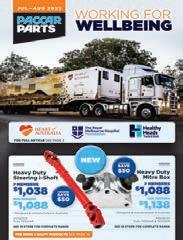
Cabin Shock Absorber MEMBERS $ 455


NON-MEMBERS $ 495
$40 MEMBERS SAVE

I COE front cab shock absorber CH6030B

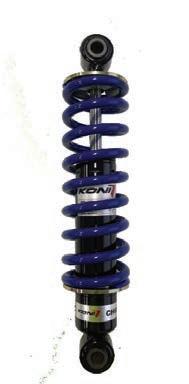
Suits K104, K104B, K108, K200 with 2.3m/2.8m cab
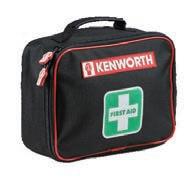


Aluminium Wheels MEMBERS FROM $ 465



Axle Cover Kit
MEMBERS $388
NON-MEMBERS $ 408
I Stainless steel hub cover kit
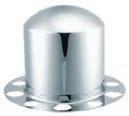

I Contains: 4 drive hub covers, 2 steer hub caps, I 60 x nut covers plus a nut cover puller 1125-6AS4
To suit 10 x 285 PCD wheels
Stainless Steel Mudguards $239

I 1.1mm stainless steel shiny finish

I Curved edge
I Single guard
Whilst
JUL—AUG 2023 CHECK THE CATALOGUE ONLINE PACCARPARTS.COM.AU/CATALOGUE WELLBEING WORKING FOR * Calls from Australian landlines are generally free of charge whilst calls from mobile phones are typically charged based on the rate determined by the caller’s mobile service provider. Please check with your mobile service provider for call rates. DEALERS AUSTRALIA WIDE | Visit us paccarparts.com.au
more details, Freecall* 1800 PPARTS (772 787) 57
herein are recommended selling prices for both Privileges members and non-members, inclusive of GST. Recommended selling prices in this publication are provided as a guide. Prices may vary at the dealerships. Freight charges may apply. Core charges are not included in selling price however may be applied by the dealer. All items have been included in good faith on the basis that goods will be available at the time of sale. Promotion available at participating Dealers from 1 July to 31 August 2023 or while stocks last.
For
Prices
every effort
made to limit
of delays,
to current global supply chain challenges,
products may not be available in
retail outlets
the promotional period. Height Control Valve MEMBERS $297 NON-MEMBERS $322 I Used on Airglide suspensions H00500CP $25 MEMBERS SAVE First Aid Kits FROM $94 .95 KWF1RSTA1DK1T $94.95 179 Piece Medium - Suitable
Large
KWF1RSTA1DK1T C-KEN989 $20
SAVE
is
the impact
due
some
all
during
for 1 to 10 people C-KEN989 $179 $199 313 Piece
- Suitable for 1 to 25 people
MEMBERS
SS11S1NC Grooved
SS11S1NCNG Non-grooved SS11S1NC
$20
WITH:
MEMBERS SAVE PACCAR’S PARTNERSHIP
88U687
NON-MEMBERS FROM $515 88U687 $465 $515 8.25 x 22.5, 10 STUD 285 PCD. Buff finish, unique trapezoid cutout design SEE IN STORE FOR COMPLETE RANGE
$50 MEMBERS SAVE
> Mack Masters’ Australian teams to take on world-best
Round three of the Mack Trucks global aftersales competition, Mack Masters, wrapped up recently in a nail-biting finale. The third round ended in a sudden death knock-out between six perfectly scoring Australian teams from Mack Trucks’ dealerships. These included one team from CMV Truck & Bus Epping, one team from Western Truck Group Townsville, and two teams from both Truck Centre WA Forrestfield and Volvo Commercial Vehicles Prestons.
Mack Masters is designed to increase aftersales competencies, celebrate and promote teamwork among dealership service, warranty and parts professionals by putting teams against each other in knowledge-based aftersales questions.
The competition is ultimately aimed at improving customer satisfaction, and culminates in a global final in Allentown
and New York in October where the best aftersales teams from around the world face off over a series of workshop tasks.
The two Australian teams who reigned victorious in the 24-hour Sudden Death battle, Top Dogs from Truck Centre Forrestfield, and V Mac IV+ from Volvo Commercial Vehicles Prestons, are now preparing to take on the best teams from Latin America, Canada and the United States. Volvo Group Australia Vice President Services and Retail Development, Richard Singer, said he was thrilled to see the strong engagement from Australia for the country’s first year of Mack Masters.
“Mack Masters offers an engaging and challenging competition that doubles as an unparalleled training opportunity for dealer aftersales teams,” he said. “For our first year competing, we

had 79 teams register which really demonstrates the enthusiasm and commitment of our colleagues across the Mack Trucks dealer network.
“A big congratulations to everyone who has taken part, and particularly to our two Finalist teams.”

Mack Trucks Australia Vice President, Tom Chapman, said he is looking forward to watching the two Australian teams throw down in October.
“We take a lot of pride in knowing our dealerships are staffed by some of the most professional and capable staff in the industry,” he said. “We’re really looking forward to sizing up against some of the best in the world in what we hear is going to be a real spectacle of an event.
“We’re quietly confident that either one of our two dedicated Aussie teams have what it takes to bring home the title.”
PRIME NEWS PRIME NEWS
24 August 2023
The teams from Truck Centre Forrestfield, and Volvo Commercial Vehicles Prestons with Tom Chapman, fifth from right.
WE’RE WITH YOU FOR THE LONG HAUL.
With heavy duty knowledge, professional service and a leading range, NAPA Auto
Parts
is far more than just automotive.
From our wide range of heavy duty Auto Electrical, OE Replacement Alternators and Starter Motors, Air Conditioning, Lubrication, Service Parts and Braking to smarter technologies and efficiencies, we’re keeping you ahead of the curve. Our branches are located on the National Land Transport Network. We are working with you to have the parts where you need them, when you need them. We are as committed to your business as you are.

Visit napaparts.com.au/locations for your nearest branch.
> Parry Logistics unveils 50th new Kenworth purchase


Tamworth freight carrier, Parry Logistics, has taken delivery of a new Kenworth 610SAR. The milestone truck which represents the 50th Kenworth purchased by the business will spend half its operational life as a B-triple and the other half pulling a 34-pallet B-double.
Delivered by Alex Milne on behalf of the Brown and Hurley dealership in Tamworth, the prime mover is powered by a Cummins X15 600hp engine, paired with an 18-speed 22 series Eaton RoadRanger gearbox using a Meritor MT 46/160 driveline.
“It’s the first T610 we’ve bought,” said Owner Greg Parry.
“The driver wanted a bonneted truck and we were happy to give it to him,” he said.
That driver, Jeremy Mountain, has been with the company, which employs over 80 people, for eight years.
“These days drivers come and go so often it’s a great mark of service and loyalty we’re happy to acknowledge,” added Parry.
The new Kenworth T610SAR is the first of its kind in the fleet, which customarily runs K200s and T909s moving general freight across the eastern seaboard and central western NSW. Parry Logistics first established its presence in Tamworth in 2002 under
Greg Parry’s leadership. The business was founded by his father, the late Don Parry, in 1958 in Werris Creek after he purchased his first truck when he finished working for the railway. The fleet consists entirely of the Kenworth brand and now possesses 50 prime movers with over 100 trailers.
“Business has slowed down a little from what we’ve seen the last three years,” said Parry.
“That certainly makes it more manageable than what it was given how busy things had gotten not long ago.
“Now, with a return to some normality, we can return to giving the customer the service they deserve.”
PRIME NEWS PRIME NEWS
26 August 2023
Kenworth T610SAR B-triple.
FOR THE LONG HAUL

IT’S SECOND TO NONE”
MARC SOFTLY, WILLATON TRANSPORT
Navistar reveals results of hybrid International SuperTruck II
fuel system resulted in a 2 per cent fuel economy improvement when compared to International SuperTruck I. Aftertreatment system improvements included diesel exhausted fluid (DEF) dosing, improved mixing and lower restrictions, new selective catalytic reduction (SCR) formulations for highNOx reduction and reduced cold-start activation time.
Navistar, the company said in a statement, was able to identify new ways to push its engines to the next level of efficiency.
Outstanding advances in fuel efficiency are just some of the revelations offered by Navistar’s International SuperTruck II. For Navistar, the International SuperTruck II platform enabled it to focus on the next generation of vehicle efficiency improvements through hybridisation and aerodynamics resulting in a 170 per cent improvement in vehicle freight efficiency. Among notable gains was the 16 miles per gallon (MPG) fuel economy not to mention other advancements over the 2009 baseline vehicle, known as the International SuperTruck I.
Delivering 55 per cent engine brake thermal efficiency, the vehicle afforded an assessment of total cost of ownership (TCO) opportunities for individual technologies, and high-voltage electrification efforts modelling hybrid technologies that can be utilised for fully electric vehicles.
As part of an ongoing project in partnership with the US Department of Energy (DOE), the SuperTruck II program aims to reduce dependency on fossil fuels and increase Class 8 vehicle efficiencies.

According to Navistar, the SuperTruck II has also proven innovative technical approaches to weight reduction from rolling resistance technologies, aerodynamic improvements, and powertrain technologies.

“With co-funding by the DOE, Navistar engineers experimented with prospective
technologies not currently available in the Class 8 truck market to accelerate the impact of sustainable mobility,” said Russ Zukouski, Chief Engineer, Global Innovation and Principal Investigator for the Supertruck programs. “The team concentrated its design on high-voltage electrification, utilising hybrid technology on a path toward full electrification that has the potential to be commercialised in fully electric vehicles and improve customers’ total cost of ownership and business operations.”
Highlighting Navistar’s commitment to an electrified future, International SuperTruck II was built as a hybrid vehicle featuring a combustion engine with highvoltage accessories and technologies, developed in partnership with Bosch. Navistar was the only OEM to build a trailer to provide the most accurate testing results possible, according to Dean Oppermann, Chief Engineer, Advanced Truck.
“It includes a 100 per cent composite box designed for minimum aerodynamic drag with light weight, integrated cross members, controlled underbody flow with composite aero treatments, nextgeneration solar panels with connectivity options, and ride height control,” he said. Engine improvements were made in key areas including combustion, friction, gas exchange, and airflow through the engine. A redesigned cylinder head with dual overhead cam engine and enhanced
“A full system approach was required to achieve 55.2 per cent brake thermal efficiency,” said Jim Cigler, Chief Engineer, Advanced Engine. “Opportunities were identified by internal engineering teams along with research partner Argonne National Laboratory through detailed analysis and simulation. System suppliers such as Bosch, Jacobs Vehicle Systems, and Applied Nano Systems (ANS) brought new approaches to key systems that enabled laboratory success and yielded real-world fuel economy improvements.”
International SuperTruck II highlighted connectivity with next-generation predictive cruise control, as well as leveraging technologies and information within the larger TRATON Group, which includes MAN Truck & Bus and Scania, to explore vehicle-toeverything technologies to enhance safety and vehicle efficiencies.
“Our goal is to continue to advance internal combustion engine technology as efficiently and sustainably as possible until there is parity with zeroemissions vehicles,” said Oppermann. “Development of both technologies concurrently ensures a smooth transition of technology to best serve customer needs. We are focused on the entire product ecosystem — product development itself, as well as infrastructure charging, service and support of vehicle operation, end of life for batteries.”
GLOBAL NEWS >
28 August 2023
Navistar International SuperTruck II.


Business. The Clever Way. *Earn 3x Qantas Points plus save up to 5c off per litre for 6 months. Purchase 10,000 litres in 6 months for an additional 100,000 bonus Qantas Points. Limited time offer. Minimum spend criteria and conditions apply. Full T&Cs apply at www.bpplus.com.au Earn big & save bigger with BP Plus Scan or visit bpplus.com.au to sign your business up to a BP Plus fuel card to boost your Qantas Points & save on fuel. + UP TO 3XQANTAS POINTS FOR6 MONTHS* BONUS POINTSMINLITREAGE APPLIES + 100 K
Shayne Commons
Shayne Commons is the Director of Product & Performance at Volvo Group Australia. He has been working with sustainable transport solutions for the past three years ensuring market awareness, suitability and readiness as well as being the Commercial Project Manager for both medium and heavyduty Volvo Battery Electric Vehicle introductions to market. Shayne has been with Volvo Group Australia for 15 years.

UPSTREAM COLOUR
For many attending the Brisbane Truck Show this year the striking custom Volvo FH16 XXL taking centre stage at the Volvo Group Australia stand was a highlight. I also may be guilty of being just a little biased on the subject as that truck and its paint scheme was my idea and project! But there was more going on with this truck than just a fancy candy apple paint job. The multicoloured swirls and whirls flowing across the panels of this prime mover represents the movement of air around the truck in motion. A visual representation of aerodynamic drag. The design is based on the computer-generated drag modelling our design teams use to make our trucks more fuel efficient. Drag is a major factor when it comes to fuel efficiency. Air flowing around a moving truck is disrupted by mirrors, door handles, wheels and mud guards which then swirls along the vehicle creating drag. Sixty per cent of the aero effects are from the truck whereas the remaining 40 per cent is contributed from trailer wheels, chassis, and base wake from the rear. But since the truck is upstream quite often the downstream effects can be reduced by the truck spec. The truck pictured here, a Euro 6 FH16 550 is already a smooth operator when it comes to fuel efficiency. However, there are lots of different factors to take into account when it comes to maximising your bang for buck out on the open road.
It’s tempting to extol the features and benefits of terrain reading cruise control and more efficient low-drag
engines and transmissions. The latest generation I-Shift transmission shifts even faster while minimising unnecessary gear changes. And the availability of 13-speed and 14-speed variants means we have the option of downspeeding the engine by using taller (faster) final drive ratios while maintaining start-ability. While all these features will absolutely save fuel, there’s also some simple, relatively lowtech factors to bear in mind. Hence the Volvo FH aerodynamic study built for the show. Tyre choice alone can affect fuel use by up to 5 per cent per tyre class. Bullbars, stone guards, light bars and air horns all contribute towards creating drag and that’s not taking into account gaps between the prime mover and the trailers it is towing.
Of course, some of these things are application dependent. However, does a truck that rarely leaves the Pacific or Hume Highway really need a roof mounted light bar, two spotlights and a bullbar the size of an outback cattle grid? Probably not!
Does that same truck need to be carrying 1400-litres of fuel and 150-litres of DEF? It’s not that there’s a right or wrong answer to these questions. But I’d suggest that it doesn’t hurt to ask them when speccing a new truck. The internal combustion engine will continue to be the heart of many powertrain configurations for a long time yet when it comes to heavy transport and new fuel efficiency features will continue to be developed. It’s worth challenging some preconceptions when updating
30 August 2023 SUPERANNUATION MINDSET OEM MINDSET
Volvo Group has ambitious emissions targets. The first steps on the path to zero emissions start with more fuel-efficient trucks.
your truck fleet.
So next time you are looking to spec a new truck, think about how you could be more aerodynamic, how you pair the rear axle ratio with the engine torque curve specific to application, challenging the configuration of the vehicle. Doing something one way just because it has always been done that way will not continue to achieve results with evolving technology.

While I clearly will be biased towards choices around prime movers (after all that’s what we manufacture), trailers also have a big part to play when it comes to fuel efficiency. B-double combinations often live a hard life as they twist and turn from deliveries and pickups. I have already mentioned tyre impact to efficiency (which relates to trailers also) but regular maintenance
and assurance of pressures as well as axle alignment does wonders for reducing fuel consumption as does making sure trailer curtains are tensioned and not flapping in the wind. So while Brisbane Truck Show 2023 gave me an excuse to build a cool truck, it’s really so much more than that. The air that swirls and eddies down the side of a truck on the highway costs more than just money. As we talk more and more about sustainability and the environment, fuel efficiency has a part to play here as well. We think electromobility is the answer for low emissions urban transport but as I pointed out earlier the internal combustion engine will also be with us for quite a while in heavy long haul roles. Obviously, the less fuel you burn the lower your emissions.
It’s no secret that Volvo Group has some
ambitious emissions targets. And the first steps on the path to zero emissions start with more fuel-efficient trucks. You’ll note I used the words “internal combustion” engine rather than just plain old “diesel”? This is an area where there will no doubt be a lot more development. This multicoloured FH has HVO (Hydrated Vegetable Oil) in its fuel tanks rather than old fashioned dinosaur bones. While HVO isn’t zero emissions, as such, it still represents a significant reduction (up to 90 per cent) from well-to-wheel emissions as a synthetic fuel.
Despite not yet being readily available in Australia, HVO is just one example of what could be done to lower emissions now (without voiding your warranty). No doubt we’ll see more development in this area too.
primemovermag.com.au 31 SPONSORED BY
Pictured right: the custom Volvo FH16 XXL.
Thirty years is but a footnote in the histories of some nations. On the contrary, for a privately owned company, it can contain family legacies of longevity and triumph. Back in 1993, the year Direct Freight Express took flight, the country had entered something of a rebuilding phase. The first signs of economic recovery from a recession
then Prime Minister Paul Keating, who was re-elected that same year, insisted, assumptively, needed to happen, were at hand. But not before the Australian dollar had, by late January, slumped to its lowest level since early 1987, prompting international investors to abandon the currency which left the Reserve Bank to intervene as part of a rescue effort. Sydney winning its bid
to host the Olympic Games, however, promised a new decade of prosperity and for many businesses, this hope, helped propel them through a climate of economic uncertainty. It was a volatile time to start a freight moving business.
Direct Freight Express, nevertheless, hit the ground running. The fledgling company navigated this embryonic period of its history courtesy of Founder and Managing

32 August 2023
As one of the largest independently owned transport companies of its kind, Direct Freight Express reinforces the formidable national footprint it has forged with modern trucks from key supplier, Isuzu.
Director, Joe Catania. By June of 1993, the company commenced with less than ten staff working across two locations in Mascot, Sydney and Reservoir, Melbourne with an Adelaide office opening little more than a week later.
That same spirit of adventure and expansion continues to this day. Over the last ten years, the distribution network has been significantly enlarged. In just 2014 the company established new branches in Traralgon to service regional Victoria, Ballina in New South Wales and Darwin in the Northern

Territory. By 2017 its national depots numbered 43 adding new locations in Gosford and Bathurst in NSW. The opening of a $36 million facility in Keysborough, Victoria, in September that same year aimed, in part, to combat increased travel times and traffic across the greater Victorian metropolitan and regional areas. A Gold Coast depot, its newest site, brings the company’s current total number of locations nationwide to 62.
The truck fleet handles 120,000 individual pieces of freight each day.
While Direct Freight Express has continued to evolve and adapt to the market’s demands over the years, one thing has remained the same – its trust in Isuzu. The majority of its immense delivery fleet is manufactured by Isuzu, particularly across the FRR 107-210s, NRR 45-150s and NPR 75-190 ranges. Direct Freight Express’ FRRs are responsible for its bulk pallet work and larger bulk consignments, while the NNR and NPRs complete 95 per cent of its parcel deliveries to homes and shopping centres, carrying commercial,
primemovermag.com.au 33
One of the newest Isuzu FRRs out in Sydney.
small-item quantity type of deliveries.
The Isuzu units, assigned Direct Freight Express’ short haul operations, typically travel within a tight radius of each depot. On average the bulk trucks clock up 120 kilometres daily while the parcel delivery vehicles travel to 115kms. About 20 per cent of the total individual runs each day cover 250 kilometres.
The fleet also runs a large prime mover fleet, mainly Kenworths, for its long haul assignments. When required, these same units can complete a route as far as Brisbane to Cairns, Sydney to Melbourne, or Brisbane to Sydney.

It’s the Isuzu units, nevertheless, that are counted on to perform the frenetic intrastate tasks for Direct Freight Express. Isuzu is not only impeccably suited to the freight profile of the business, but according to National Operations Manager, Jason Elliott, it has consistently outperformed other brands in the array of tasks asked of them.
“We find Isuzu to be a good, reliable brand,” he says. “They especially suit our operation as far as the space goes inside the vehicles and their weight tolerances. We have different units for whatever we need – we’ll have a lightweight body on the chassis, but we will also have 4.5-tonne ones that are registered and rated for 5.5- and 6.5-tonne payloads instead of the 4.5-tonne car license ones, where required.”
A typical Isuzu order by Direct Freight Express involves three truck bodies. The fleet gravitates towards either a hard side body with a roller door on the back, a curtainside with a side door, and either a tailgate or a full curtainside. Elsewhere, specific pallet size is designated according to both application and environment. Direct Freight Express will go from the basic 4.5-tonne bodies to the larger 12-palleters – essentially from the smallest Isuzu can make to the biggest.
A consistency across the Isuzu brand, through aftermarket sales and support, and their ability to supply equipment has remained a major selling point
according to Jason.
“The fact that for a long time they didn’t change their models a great deal, was conducive to buying the same type of trucks and parts,” he says. “We try to keep everything the same so we’re not carrying spare parts of everything – the less models, the less brands, the better. And Isuzu weren’t dramatically changing the models every year or every couple of years, which made it easier on us to
Freight Express’ needs was evident as soon as the first trucks were put to work. “After they were purchased and we started using them, we found that we
34 August 2023 COVER STORY
why change?’”
Quite early on the fleet went from buying from Isuzu and other suppliers to dealing directly with North
at supplying the equipment as is required and North East Isuzu prepares them to get them on the road. It’s a very consistent product and supply is great.
A primary reason Direct Freight Express opts for North East Isuzu comes down to it being both a dealer and a body manufacturer. By supplying the cab

primemovermag.com.au 35
Jason Elliott.
chassis and building the body to go on the vehicles, it has become a one-stop shop for Direct Freight Express. “We don’t have to deal with multiple people and then have different bodies,” Jason says. “Because of that, our trucks are consistently the same in terms of changes we’ve made as we’ve gone along as a company. Whereas, if you’re using dealerships, they will use different body manufacturers and different bodies. We don’t have that.”
Direct Freight Express’ latest order with Isuzu mainly consists of FRRs, with another 50 currently on order. Each unit houses Isuzu’s 4HK1-TC engine which produces 154kW of power at 2,400rpm and 726 Nm of torque at 1,600rpm. Also fitted is Isuzu’s six-speed, two-pedal automated manual transmission with a torque convertor. Cruise Control, driver and passenger airbags, anti-lock braking,
anti-skid regulator and hill start aid also add to a long list of comfort and safety features within the FRR 107-210. The vehicle also features the ISRI 6860 air suspension driver’s seat with pneumatic lumbar support and weight adjustment. The family behind Direct Freight Express prides itself on living up to being one of the most reliable and respected road freight services in Australia. That also means staying true to its heritage. Part of that commitment involves providing its stakeholders today with the same family values the company was founded on 30 years ago. It’s not for mere promotional sloganeering either. That same culture helps assert flexibility and consistent growth pathways in an ever-changing industry. The fleet, subsequently, can now cater for a much larger range of professional freight requirements. These include its ‘book in freight’
service which ensures that all goods are delivered within timely arrangements and an express freight service – powered by the fleet’s linehaul vehicles, extensive company depots and agency facilities – which guarantees freight will arrive at the end destination in the shortest time possible. Backing these services is an ongoing dedication to safety with regular investments in equipment decked out in safety features, such as EBS on trailers and autonomous systems for braking and distance monitoring on its prime movers.

With regard to monitoring, all of Direct Freight Express’ facilities are surveilled by CCTV cameras 24 hours a day and are surrounded by electric fencing. The fleet is also monitored via satellite tracking to allow the precise location of any truck to be viewed at any time.
Following each of the company’s various
36 August 2023 COVER STORY
DFE driver Brendan Mani operates the truck tailgate.
Isuzu purchases Jason has received nothing but positive feedback from drivers. This, he says, has made it easy for him to continue to purchase more Isuzus in the near future.
“The drivers all seem to enjoy driving
them,” he says. “I don’t hear any negative feedback. Drivers don’t necessarily run over to tell you it’s wonderful, but they’re quick to come over and tell you when they’re not. And I haven’t had any of that.
“Overall, when it comes to warranty and the likes, it’s all supported by Isuzu Australia. I just find them a very professional and great organisation to deal with.”
Running a national operation like Direct Freight Express means fleet management must ensure the vehicles are always operating at the highest of standards. On this front, Isuzu’s reputation for reliability, according to Jason, perfectly aligns with the Direct Freight Express business model.
“It’s been a very long, profitable relationship for both parties,” Jason says. “I find them extremely good, especially if there’s been any small issues. They’re very responsive in finding the problem, fixing the trucks and getting them back working. I certainly can’t complain, and North East Isuzu is a huge part of that as well.”

primemovermag.com.au 37
“We find Isuzu to be a good, reliable brand. They especially suit our operation as far as the space goes inside the vehicles and their weight tolerances. We have different units for whatever we need –we’ll have a lightweight body on the chassis, but we will also have 4.5-tonne ones that are registered and rated for 5.5- and 6.5-tonne payloads instead of the 4.5-tonne car license ones, where required.”
Jason Elliott
Direct Freight Express National Operations Manager
Direct Freight Express Isuzu FRR 110-240.
PERSISTENCE OF VISION
Sunshine Coast carrier, Gibson Sand & Gravel, is one of three fleets in Australia asked to give a 12-month appraisal of the new Western Star 48X.
Based at Beerwah in the spectacular foothills of the Glasshouse Mountains, Gibson Sand & Gravel has been a permanent fixture for the better part of three decades on the Sunshine Coast, where it carts quarry products for major suppliers to concrete and asphalt plants. The business has undergone a few iterations since the 24th October, 1994 when owner Wayne Gibson established it. At first using body trucks supplying builders and plumbers from a yard, then as a truck hire business and finally, once the quarry work began to flow, as the truck and dog operation it is today.
Major contracts with Holcim encouraged further investments in equipment and with that came fleet expansion. Up until 2015, when Wayne purchased his first new truck, the business had been primarily relying on second hand equipment.
The Western Star fleet has since multiplied exponentially with a few older Macks maintained for miscellaneous work and spill over seasonal demand.
It was a CLR Mack powered by a Detroit Series 60 engine, that refused to quit, which first pointed Wayne in the direction of the Western Star 4800 product with its reputed Detroit DD15. Detroit was offering one million kilometres, 500,000 litres of fuel or a five-year warranty, which ever came first, that ultimately helped make the final decision for him.
“They’re a solid work truck and basic to operate,” he says.
“This is the main reason I got onto them.”
With each subsequent contract he secured, Wayne bought another Western Star 4800 — 19 of them to be accurate.
The Detroit DD15 with an Eaton 18-speed RoadRanger gearbox is entirely suited to his operations which are informed by distinct environmental considerations. No great distances are involved, but site access can be tricky with lots of lower gear shifting and confined jockeying of vehicles that are reliant on noticeable power to weight ratio, durability, low centre of gravity and traction.
All but two of the fleet are 20-metre-long truck and quad dog combinations. That’s the sweet spot for the business as it enables a 38.5 tonne payload at 57.5 tonne gross.
The Gibson Sand & Gravel yard is conveniently located ten kilometres either way of its main quarry partners. When the trucks aren’t shuttling between the two, they

FLEET FOCUS 38 August 2023

primemovermag.com.au 39
Western Star 48X truck and dog..
are deployed south to occasional jobs in Brisbane.
“We’re right smack bang in the middle of our working area,” says Wayne. “This is fortunate given we adhere to compliance within a 100-kilometres of our main site without filling out logbooks.”
Naturally they can go further than that with additional approvals from the PBS network. On non-PBS access routes, they are, however, restricted to 50.5 tonnes. The newest addition to the fleet will be from the X Series launched late last year by Western Star. Wayne has ordered a 48X after taking part in an evaluation program organised by importer and distributor Penske Australia for the better part of a year.

“The idea is for me to pick it to pieces and let them know where improvements can be made,” says Wayne. “It’s a good highway truck. I have been noting efficiencies and improvements that can be made to it.”

The Detroit DT12 automated manual transmission has taken some getting
used to at low speeds, given the rest of the fleet’s vehicles are shifted by stick and there are plenty of soft sites with sandy bases affected by heavy rains in the subtropical climes.
“It’s comfortable and you’re not crunching gears all day,” says Wayne. “Most of my drivers are well over 50, some in their 60s and one or two in their 70s. One of these days I’m going to run out of people who can handle a manual transmission.”
Wayne says it’s only a matter of time before
the older drivers get used to an AMT, given there has been some initial reluctance on
“It’s taken me a long time and they’re a different style of truck to drive, particularly in those tight situations,” he explains. “Most of the older fellas I know who drive trucks all day have some sort of issue with their left shoulders from changing gears. A lot of people who get into the automatic trucks won’t drive anything else. I imagine that will happen here eventually.”
Initial data confirms a noticeable 10 per cent improvement on fuel economy. According to General Manager Richard Hellings, the loan 48X, with its Detroit DD13 Gen 5 525hp engine, is impressing particularly thanks to improved power through its advanced engine management system.
“For a smaller engine than the 15-litre it produces about the same horsepower,” he says. “The fuel economy is way ahead of the older trucks and it’s pulling just as well as the DD15s.”
40 August 2023 FLEET FOCUS
The quad-axle dog trailer is loaded at a quarry site near Beerwah..
Wayne Gibson.
That’s vital, too, given the new Western Star 48X Detroit DD13, displacing comparable horsepower as the older trucks but at a significantly lighter weight, helps add extra payload capacity of 39.5 tonnes.

According to Wayne the Western Star 48X fuel burn is a healthy 43.6 litres per 100 kilometres. It’s also the only truck in operation at the business that uses AdBlue. That’s an advantage, given the 4800s use EGR which often requires a stationary regenerative burn that can take half an hour to complete.
“With the AdBlue that doesn’t happen,” says Wayne. “When the truck is working hard the EGR takes over when it’s idling. The AdBlue controls the emissions. They’ve got both systems.”
That has saved some additional time for the fleet. The next truck already on order, however, will have the larger 16-litre Detroit engine.
“I went for the bigger horsepower,” explains Wayne. “Not that we really need it but it’s handy to have when you want it.”
The majority of the tippers are designed and built by Hercules with a few made by Shephard Transport Equipment, keeping the partnerships local, Brisbane-based.
“I like to spend my money locally and keep local people employed,” says Wayne.
“I hail from the bush, so I tend to defer to the smaller guy to keep him going.”
This approach extends to the workshop or lack thereof. There’s no full-time mechanic as Wayne’s preference is to outsource to a local auto mechanic and air conditioning technician. To this end, investing in new and near-new trucks has brought an end to a reliance on an inhouse workshop.
Richard Hellings, 75, has been with Wayne since 2000. He oversees maintenance and performs the NHVR compliance, having driven himself for many years.
“Wayne had a Mack twin stick and everyone he tried to put in it refused because it was just too hard for them,” he recalls. “As I’m fairly old and had driven them before I ended up doing it.”
The eight wheel MIR700 was paired with a Mack 237 motor and a six-speed Mack box.
The main box had five gears and the joey contained high, low and reverse. That gave it six forward gears and five reverse modes. As complicated as the set-up sounds, it’s bread and butter for an experienced veteran like Richard.
As a driver, he started out in 1968 on the brutal Sydney to Perth trek, driving for his troubles a 126hp supercharged Foden and later “upgraded” to a truck five years younger, an AEC Mandator. They were all single drive in those days with a spread trailer.
“It was Gardiner-powered and the revs weren’t huge at around 900 and they went everywhere at 32 mp/h,” recalls Richard. “They pulled well enough hooked to a spread trailer and you could move the front axle on the bogie forward to get your weights right.”
According to Richard, 27.5 tonnes was the gross mass and the only good thing about it was there wasn’t many weigh stations and transport inspectors, as none of the states were synchronised by computer database.
“Most of us had two or three different licences from different states and then
they brought logbooks in and that sort of stuffed that up,” he says.
The Western Stars, in Richard’s observation, are quiet, much quieter than the Macks. “They’ve got plenty of grunt for what we want to do with them and we’ve dialled up the engine management system on a couple,” he says. “The fuel economy is not bad, normally just over 2 litres to the kilometre.”
Having the fleet standardised cuts down on unnecessary inventory in Richard’s estimation. Instead of carrying a quarter of a million dollars in parts to service a variety of different trucks means Gibson Sand & Gravel only holds $100,000 worth of parts on hand.
Richard’s son, named after him, is in his 40s. He’s the fleet tyre manager, who also helps out with general repairs. His son, who previously worked for the business, also carries the same name.
“I had all three of them on the books at one stage,” Wayne says. “The only way I could pick them apart was by their birthdates.”
Even so, Wayne acknowledges the longevity of the company owes much to Richard’s knowledge and business acumen.
“The business would not be where it is today without his assistance,” says Wayne, who recently turned 68. He worked on his birthday. That involved driving all day, before dinner at home in front of the football. Living on site, where he is in the process of building a new shed, installing a washbay and concreting the yard, doesn’t afford him much downtime.
“There’s always something to do,” he says. “When you live on site you just can’t get away from it.”
Wayne was raised on a farm in the Western Downs area of southwest Queensland. That was where he first became acquainted with tractors, trucks and heavy machinery. It’s stuck over the years. Despite many challenges, he has too.
“Wayne’s done a marvellous job persisting, and I think it’s the right word, trying to make a go of it and he’s finally got there,” says Richard. “Nothing’s easy in transport. But it just proves that if you set your mind to it with a decent team you can successfully drive a business.”
primemovermag.com.au 41
THROUGH ROOF THE

FLEET FOCUS 42 August 2023
A Palfinger crane mounted to a Mack truck at a building site at sunset.
George Prothero has logged more than 40 years in the building component industry and took the plunge in 2002 to establish his own family business building roof trusses and wall frames in Wangaratta. George started with three people who came with him from a previous business where they had all worked together, and within six months another 12 or so came across. Today, the “small family business” employs 130 staff.
George grew up in nearby Benalla and decided to establish the operation in Wangaratta due to its central location and the lower costs involved in setting up a business in a country town as opposed to the investments required in a major city such as Melbourne. The modern Alpine Truss 6,000m2 manufacturing plant is located on seven acres.
George didn’t really have an intention of having his own trucks, but like a lot of similar small businesses he was essentially forced into it by circumstances.
“I had a transport contractor ring me one Christmas Eve to tell me he’d had enough and didn’t want our work anymore because he couldn’t find capable drivers,” says George. Fortunately, most of the
building industry shuts down over much of January, leaving George just three weeks to organise transport.

“I had a few mates in the industry who lent me their trucks,” recalls George. “We all went and got licences including myself, the production manager and the operations manager.”
With a few new Japanese trucks to begin with, George had a guy call in from Mack one day. Despite not being in the market for a new truck, the salesman brought a new Mack Trident with him and out of courtesy George had a look at it.
“Within 24 hours I’d placed an order and I haven’t looked at anything other than Mack since, and I’ve probably bought 20 Tridents in all,” says George. “They’ve looked after me through good and bad times. The trucks do the job nicely and because we’ve got the big cranes on them they handle the weight.”
The Mack purchases include two 100 Year Anniversary models delivered in May 2020. The most recent acquisition in March 2023 is a Mack Anthem, taking the current fleet to 16 prime movers and 28 trailers.

“We bling them up and I do it for the drivers. My truck drivers are my sales reps,” says George. “They go on site and have to be our sales people. Basically, if I am going to get and keep good drivers, I need to have good equipment.”
The Anthem was the first of that model in Australia to be fitted with a crane and was also optioned with square fuel tanks and eight bag air rear suspension. Mack’s local manufacture meant the engineers could work with factors such as the wheelbase to best configure the axle weight distribution in relation to the crane. The Anthem is equipped with the Bendix Wingman Fusion safety system which integrates radar, camera and the braking system to assist the drivers in avoiding potential hazards. The Wingman system is standard on the Anthem, and George also options it when ordering new Tridents. “There doesn’t seem to be the same cowboys on the road that there used to be,” says George. “I think it has
primemovermag.com.au 43
Alpine Truss uses its own fleet of Mack trucks to deliver roof trusses and wall frames from its manufacturing facility in Wangaratta.
The new Mack Anthem.
been cleaned up a lot and I never hear complaints about other truck drivers. But virtually every day we have reports of car drivers doing something stupid.” Dashcams are, to help allay these working conditions, fitted to every truck. With a typical payload weighing not
much more than five tonnes, the Macks’ 535hp 13-litre engines are very understressed and the drivers have really taken to the mDRIVE automated transmissions. Truss manufacture is in an extremely competitive market and most of Alpine’s products are supplied into the Melbourne
area where there are up to 80 other truss and frame fabricators. Alpine Truss has been able to grow its business with the support of its customers large and small and is today regarded as one of the industry’s major players in Victoria. In addition to the Melbourne and Geelong and even Phillip Island areas, Alpine Truss covers all of northeast Victoria and southern NSW and as far as Canberra or Mildura.
George’s son has a similar manufacturing plant with its own in-house transport operation located in the NSW Southern Highlands and both operations are able to support each other when required. It’s also the usual destination for any Macks retired from the Wangaratta-based fleet. New trucks also means new Palfinger cranes which is another brand George remains very loyal to.
“They work well and we’ve not had a bad experience,” he says. “That’s what it’s all about. We could buy cheaper trucks but again are we going to get the service we get now? I have people call me and ask if I have any trucks for sale because they know they’re good trucks and we look after them.”
Every driver has the appropriate crane operators’ credentials. Alpine Truss operates its own workshop where the minor services are carried out on the Macks by two staff mechanics, with major services performed at the CMV dealership in Wodonga.
In addition to any new trailers which are predominantly extendables from Barker, the Alpine mechanics refurbish used trailers when they are acquired, including conversion to air bag suspensions. The plantation pine timber used in the manufacture of the roof trusses and wall frames is delivered to the Wangaratta facility by the suppliers. Occasionally one of the Alpine Truss Macks will pick up some timber out of Melbourne but most return legs are travelled without loads. Operationally, the trailers are usually loaded by yard staff during the afternoon, with the drivers commencing their trips around 3.00am, to arrive on site by

44 August 2023 FLEET FOCUS
Andrew Thompson from CMV Truck & Bus with George Prothero.
7.00am and be home by 2.00pm which manages the drivers’ hours effectively without them becoming fatigued.
Alpine Truss employs some very strict delivery procedures in relation to safety. “The guys in the yard pre-sling all of our loads so the drivers don’t have to get up on top of the loads. It’s something the entire industry should be doing,” says George. “We spend thousands of dollars per year on slings. We inspect them every three months and even a little tear means they are thrown out.”
This detailed approach to safety continues once a truck arrives at a building site.
“A lot of people do stuff on site that we just won’t do. We won’t lift the top plate unless there is somebody else on site. That’s the rule,” he says. “Other cowboys are doing it at 4.00am in the dark by themselves, climbing up on the roof, undoing the chains and leaving the crane unoccupied. We can’t do that.”
The design of modern houses translates to larger dimensions especially of trusses
which can now translate to loads 3.5 metres wide and up to 16 metres long. “All of our drivers are as good as each other,” says George with some pride. “We don’t have ‘super’ drivers to do special loads because we train everyone to be able to do the hard jobs as well as they do the easy jobs.”

For the factory roles Alpine Truss places strong value on attitude and work ethic. “Turn up for work and we’ll train you. Because I’ve got such good staff my own job is becoming a bit redundant,” says George. “I’ve always been very hands-on, but everyone kept telling me you’ve got to hand some stuff over. And I eventually did. Now when I come to work I’m looking at ways of improving the business either in equipment or efficiencies.”
Alpine Truss maintains a large investment in equipment, with about $4 million spent in the factory during early 2023 with the main aim to reduce manual handling. The trusses are designed using licenced software and are based on plans provided by the builders. It
is vital that the designs are accurate as the instructions are sent directly to the automated saws in the factory.
George is appreciative of all of his staff, but is particularly proud of the people who gave up secure employment to join him in his then new venture more than 20 years ago.
“There were no guarantees this was going to work,” he says. “Many of them showed faith in me and dropped big money to come here.”
The Australian building industry has had to face numerous challenges during the past few years, many related to having enough people. This situation may be assisted, or perhaps hindered, by increased immigration levels.
“We are bringing 700,000 people into Australia and I don’t know where they are going to live,” says George. “We already have so many people who don’t have a roof over their head.”
It is likely many of those roofs will be built with components from Alpine Truss and delivered by their Mack trucks.
primemovermag.com.au 45
The new Mack Anthem outside the Wodonga dealership.
ACCESS A
The vast majority of Burdett’s imposing 88 truck and trailer and multicombination fleet is approved under PerformanceBased Standards. Working predominantly out of sandpits and feed sites in Melbourne’s southeast, New South Wales and South Australia, vehicle specs range from tandems right through to a pair of roadtrains. As a carrier of sand and soil as well as mulch, green waste, firewood, fertiliser and grain, the truck and dog operational spec varies enough to include three-axle dog units right up to six-axle dogs and even several B-doubles.

“If it goes in the back of a tipper we’ll cart it,” says Transport Manager Rod Forth who has been with the company for four years. The fleet is populated by several different brands, most of which share the commonality of having an automatic transmission. The RoadRanger gearbox can be found only in a couple of instances. “Durability is good with the automatics. They return, usually, a better fuel economy because it’s naturally all computerised,” says Rod. “They do have the ability to change manually by the driver but left in auto mode most of them will just do their thing.”
Electronic presets within the truck help to achieve the best fuel return in Rod’s experience given the many variables at play within a truck gearbox. An automatic transmission, he says, removes a lot of potential obstacles.
“If a driver is not driving it properly you get diff wear, gearbox wear, engine over rev, clutch,” he says. “There’s any number of things we can talk about.”
Burdett’s have recently introduced three new Freightliner Cascadias using pusher axles, which is to say a four-axle
truck pulling a four-axle trailer. One unit is technically trailing a five-axle dog behind it. These vehicles have been introduced, according to Rod, for the extra carrying capacity.
“With the four-axle truck with a four-axle trailer we’re carting the same capacity as a three-axle truck with a five-axle trailer,” he explains. “So, it shortens up the combination a little bit which gives us greater access.”
Access, after all, is one of the areas the team can make incremental gains in given its vehicles often run between many smaller sites and quarries.
“Once we get over 19 metres, which is virtually our truck and quad dog, we need access permits if we’re off PBS route,” explains Rod. “That gives us a greater capacity. We predominantly use them to come out of our own sandpit at Hallston and cart and feed into our own sites which seems to be working extremely well for us. We’re one of the very few who are running those combinations of the four-axle truck and four-axle trailers. You won’t find much of that across the industry.”
As it’s not a well-known configuration, Rod and Group Director Andrew Burdett, had a series of conversations over the months before they eventually committed to the pusher axle spec. It shapes as a key decision for the fleet.
In addition to the three 116 Cascadias being used in the truck and dog division, there is another five of the new Freightliners dedicated to pulling B-doubles. These are all new purchases. Although it’s still only early days in which to make a data assessment, Rod says the fuel burn figures the trucks are returning is strong indication that these are a superior heavy vehicle. Drivers haven’t wasted
any time in expressing their approval of the new Cascadias. Acceptance is, without exception, enthusiastic across the board. For Rod, the standout factor, impossible to ignore, of the new trucks is the sophisticated monitoring they offer through Detroit Connect telematics. “They are way ahead of most others,” he says. “We can monitor driver behaviour
TRUCK & TECH 46 August 2023
Several new Freightliner Cascadia units have won favour with the team at Burdett’s in Melbourne owing in part to the clear gains shown by the sophisticated Detroit Connect telematics.
LL AREAS
“The telematics on the truck will still alert me that it is a trailer issue,” says Rod. “That means we can send an external mechanic out to deal with the trailer rather than getting the OEM out there who is there specifically for the truck. It just makes that whole process a lot easier.”
Fault finding is made much simpler this way. Detroit Connect will log any minor fault as well. Based on a prompt from a driver who has experienced an alert, Rod is finding he can have a closer look to determine what it is and cancel out, if need be, the driver.
judgement. Rod logged into the Detroit Connect telematics linked to the truck and it immediately identified there was a brake issue with the A-trailer.
“What we found out was when he pulled onto the weighbridge he’d blown a brake booster,” recalls Rod. “That’s all it was. Instead of getting the OEM out of Ballarat or Laverton, I’ve got another mechanic I regularly use nearby. I got him out to replace the brake booster. That’s how accurate the telematics are.”

The big benefit in that situation was the time it saved Rod and his partners.
around,” says Rod. “The outcome for us was huge.”
For the mechanic attending the breakdown, knowing exactly what is needed rather than loading up with all manner of parts and tools in the hope that they will have enough on hand to solve the problem delivers, for everyone involved, an efficiency that has many positive residual effects.
“Detroit Connect helps you to give the relevant information and the heavy vehicle mechanic knows when they go out that they’re taking what they need,” says Rod.
Freightliner Cascadia 116 with dog trailer.
of a kilometre over 12 months is huge win for us,” says Rod. “It’s thousands of dollars especially given the price of fuel at the moment.”
Measuring fuel burn is mixed up between mileage and hours given the network for Burdett’s is compressed in large part. The trucks do, however, amass significant idle hours at quarry sites.
“Our B-double guys do roughly around 180,000kms a year,” he says. “Our local trucks which are our quarry trucks, they do around 140,000kms a year give or take.”
In Rod’s experience, Detroit Connect is leaps ahead of the other telematics he’s used across his mixed fleet. It monitors driver behaviour as well, which he uses to ascertain whether any additional training should be offered. On-road incidents not related to the driver are also flagged by Detroit Connect.
“At the minute we’re finding the Cascadia is a pretty good product,” says Rod. “Not only are the drivers liking the truck as it delivers outstanding comfort but we’re seeing real advantages in most areas that count. Serviceability will tell within time.”

Parallel to Detroit Connect, Burdett’s runs a Webfleet tracking system. It offers a dashboard that monitors and categorises different aspects of driver behaviour from heavy braking, heavy cornering to acceleration so that evaluations of individual drivers can be made accordingly over a day, a week or month.
“The location of a driver is provided which proves useful,” says Rod. “That way when it flags heavy steering you can locate that he was up in the hills somewhere where it’s been very cornered and that’s why there’s been heavy steering.”
It’s no secret the workforce across the entire transport sector and especially truck driving is ageing. Demographic challenges are not an issue at Burdett’s given it boasts an even spread of driver ages. Rod says the company employs many drivers who have only been in trucks for a few years while retaining older drivers who have been doing it most of their adult life.
“What we’re finding with the younger guys, is that they’re a lot more adaptable to the new technology,” he says. “Which is just a given. In saying that, the older guys do take the newer technology on board, and we get great outcomes.”
All of the fleet’s trailers are on service contracts. Burdett’s primary supplier of tippers is BTE, whose good reputation precedes it. For Rod, the advantage, above all others, when working with BTE is that they’re hyper-aware of fleet requirements. “When we put in an order with them it makes the order side of it a lot easier and they can complete the PBS compliance for us because they have all of the specifications already there,” he explains. “There’s no real great external involvement. That streamlines the process for us.”

Burdett’s recently purchased six new Kenworth T410 and T610s with three new K200s already due to arrive soon. These are all considered replacement trucks. Mack, another one of their regular suppliers, should deliver new vehicles by Q4. More recently, three new UD Quons have joined the fleet. The UDs are used particularly for restricted access sites they encounter at many smaller garden supply centres. According to Rod they are handling the workload extremely well towing a quad-axle behind them grossing out at around 54 tonnes.
“Because they are a cabover and a nice, little, short unit, the UDs are reliable and return good fuel economy,” he says. “Our R&M is relatively low on them. They just seem to be good value. It’s a simple as that.”
Some of the UDs are featuring redesigned livery as part of a campaign to promote Beat Bladder Cancer Australia. It’s a message that resonates personally with Andrew Burdett who acted on an early warning sign himself. He is currently undergoing bladder cancer treatment which he commenced nearly a year ago. Rod has received a uniformly positive response from drivers about the Bladder Cancer awareness campaign that has been expanded now to five tipper combinations. “They’re happy to have that on the side of the trucks,” he says. “It is gathering a lot of interest and that’s what it’s all about.”
48 August 2023 TRUCK & TECH
One of the new UD Quons promoting Bladder Cancer Awareness.


MARKETPLACE ® AUSTRALIA’S DEDICATED ONLINE MARKETPLACE PORTAL FOR BUYING, SELLING AND HIRING TRUCKS AND TRAILERS. Our online marketplace is dedicated to the sale and hire of trucks, trailers and other transport equipment Australiawide. From low loaders and tag trailers to rigid-bodied vehicles and prime movers, you’ll find it here. Whether you’re looking for a deal or keen to sell some high-value assets, we have you covered. For advertising opportunities, contact ben.coleman@primecreative.com.au or call 0466 545 664 BUY. SELL. HIRE. Scan the QR code to find out more.
CREAM OF
Cropline Group, still a family-owned and operated company, has been providing transport services to the agriculture and mining industries for over 80 years. The Group consists of numerous businesses, two of which –Cropline Haulage and Bulkline Haulage – have their own roles to play in their
respective industries.
Based in Perth, the name ‘Cropline Haulage’ has become synonymous with the key moving parts of the Wheatbelt region in Western Australia for generations through the transportation of grain fertiliser and all bulk commodities. To Cropline Haulage, it is as much a part of the

agriculture business in WA as the farmers themselves.
Up northwest in Port Hedland, Cropline Haulage’s sibling, Bulkline Haulage, services numerous mine sites around the Pilbara and the Goldfields. It too, is a key player in its respective field. Having been appointed as the primary contractor to transport ore to Utah Point
TRUCK & TECH 50 August 2023
Running two transport businesses at once may be difficult at times, but Cropline Group has found SAF-Holland components across a large portion of both its fleets has made the process much more seamless.
Mega Quad, 235-tonne gross pulled by a Volvo prime mover.
THE CROP
in 2016, Bulkline Haulage has been a partner of Mineral Resources at the Iron Valley and Wonmunna projects near Newman ever since.


A major contributor to the success of both fleets within Cropline Group, says Operations Manager, Steve Carroll, is SAF-Holland. For over 15 years both Cropline and Bulkline have relied on SAF-Holland gear across 70 per cent of their fleets. These components, predominantly the SAF-Holland Modul ten-stud disc brakes, have proven to be a worthy addition to any application, due to their ultimate reliability and low maintenance.
The business’ most recent order to back this up went straight to its new ultraquad combinations, which Steve says have since been performing to – and above – his high expectations.
“We have only taken one of these so far, which is currently in the pre-delivery stage,” he says. “But what we’ve found is there’s just very minimal issues when using these products. All of their running temperatures are normal, and they don’t have any issues with bearing failures or bearing heat. They’re the only real purchases that we’ve done recently, but we will be building more gear and definitely running SAF-Holland in the future.”
While it was the durability of the SAF-Holland product that originally
caught Steve’s eye, it’s that and the manufacturer’s “second-to-none” aftersales service, he says, which has kept it in his eyesight since.
“We generally try to stay with SAFHolland just for the low maintenance side of it, their aftersales service and the warranty factor should we need it,” he says. “Our first purchase was sort of
of gear,” he says. “They’re just really low maintenance. Over the 15-odd years that we have been using them, for example, there have been very few failures. I think that speaks for the product itself.”
Dealing with the disc brakes on a daily basis, in the harshest road conditions of WA, Steve’s drivers also agree on the durability of the SAF-Holland product.
based around the quality of the gear, the unitised bearing, the million-kilometre warranty. But since then, it’s just been about maintaining that quality within our fleet.”
SAF-Holland’s Intra is a highly efficient integrated suspension system for 9-tonne applications. With high performing ‘integral’ disc brake technology, protected shock absorbers and brake chambers, and a design that is both light weight and featuring low maintenance, customers like Cropline Group are given an optimal suspension system for any transport task. This, Steve says, he can testify to.
“During my entire time using the product it’s been a very impressive bit
“Our drivers say the same thing too, that there’s just very minimal issues,” he says. “They’re very driver-friendly and, again, have extremely low maintenance requirements.”
Using SAF-Holland’s axles and suspension units in the long-term, Steve explains, has paid off for Cropline Group in all of its operations.
“SAF-Holland’s disc brakes most definitely have benefitted both Cropline Haulage and Bulkline Haulage,” he says. “It’s just a great product, and if we do have a failure of any type, which we rarely do, the warranty process is very easy for us. From our perspective, it’s just very highly rated. That’s both in the southwest and the northwest.”
primemovermag.com.au 51
SAF-Holland Modul ten-stud disc brakes are in wide use across the fleet.
ZERO HERO GROUND
From concept to practical reality, the transition to low and zero emission trucks is a journey which speed is accelerating rapidly and Volvo Trucks has demonstrated a determination to be at the forefront of road transport’s CO² reduction.
Heavy hitters no less than Roger Alm, President and CEO of Volvo Trucks globally and Per-Erik Lindstrom, who is
the Senior Vice President of Volvo Trucks International, travelled to Australia to participate in the Volvo Trucks Australia Sustainability Summit held just prior to the 2023 Brisbane Truck Show.
“We decided very early that electrification is the best way to meet zero transport emissions for our customers and our society,” says Roger. “In 2019 we started series production of our first electrical trucks for city distribution and refuse applications. We are breaking new ground and we are doing that together with our customers.”

In September 2022 Volvo commenced production of heavy-duty electric trucks and currently has six electric truck models covering the majority of customer needs including city distribution, construction and linehaul applications. Volvo has sold 5,000 electric trucks to date into 40 countries and is poised to enter the African, Asian and Latin American markets towards the end of 2023.
“By 2030 our ambition is that 50 per cent of all global volume for Volvo Trucks will be Battery Electric or Fuel Cell Electric, and by 2040 our aim is all trucks we sell will be net zero emissions trucks,” says Roger. “This is very ambitious for Volvo, but we are so very determined to continue to lead.”
Volvo Trucks’ recent global success in sales, including significant market shares in Europe and North America is important in providing the financial
requirements for the massive investments in research and development of zero emission trucks.
“We see the future having different technical solutions but we strongly believe that Battery Electric trucks will be the huge majority in reaching our target of 100 per cent fossil free vehicles by 2040,” says Per-Erik Lindstrom. “We realise we need to work with more than one solution.”
After more than a century of development, modern internal combustion diesel engines have thermal efficiencies approaching 50 per cent and significantly, all of the non-electric Volvo trucks displayed in Brisbane were fuelled by hydrogenated vegetable oil (HVO) which is one of several renewable fuels being explored along with liquefied biogas as interim solutions in the transition away from fossil-sourced diesel. HVO became recognised as a fuel by the Commonwealth Government at the beginning of July earlier in the year.
“We see different types of gas solutions like Liquefied Natural Gas (LNG) and liquefied biogas as sustainable solutions,” says Per-Erik. “We also see hydrogen as a possibility for internal combustion engines. It’s roughly the same technology as using LNG.” Hydrogen is also being utilised to generate electricity in Volvo’s fuel cell electric vehicles. In this category, a joint venture with Daimler Trucks draws upon the expertise of fuel cell specialist
TRUCK & TECH 52 August 2023
No longer just a vague concept of the distant future, electric trucks are now making their way onto our roads.
Roger Alm.
Cell Centric to develop heavy-duty trucks with effective travelling ranges of 1,000 kilometres.
“We have been testing on public roads in Sweden, and in a couple of years from now we will actually have real customer tests,” say Per-Erik. “We foresee this technology will be more mature in the second half of this decade, and we have to remember this is an electric truck and there will be batteries on the truck.”
Currently, production facilities overseas are performing assembly of diesel, gas and electric powered trucks on the same production lines. There are currently no plans to introduce the manufacture or assembly of electric trucks in Australia. As its source of batteries, Volvo has a partnership with Samsung and plans to build a battery factory near the present engine plant in Sweden. As it pursues the transition to electric and hydrogen vehicles, Volvo also remains focused on the here and now. The Volvo FL and FE Electric medium-duty range provides a zero emissions option in
GVM applications ranging from 16,000 to 26,000kg. Electric Volvo FL and FE medium-duty trucks are operating in Australian fleets including Linfox, Team Global Express and Australia Post. Volvo has also announced the first Australian order of the recently unveiled heavy-duty truck, the FH Electric which is the largest truck in Volvo’s fleet of electric vehicles and has a range of 300km at a GVM of around 44 tonnes. The order also includes the mid-sized FL Electric, which has a range of 400km and both trucks are anticipated to be delivered to Followmont Transport in late 2023. An order for a FMX Electric prime mover has been placed by Queensland Fire and Rescue.
“We’re really excited to have our entire electric range now available for sale in Australia” says Gary Bone, Vice President Volvo Trucks Australia. “The charging network is going to be critical to the success of these electric vehicles for our customers and the industry as a whole. At Volvo we use the acronym ABC: ‘Always Be Charging’. We are encouraging our
customers that when they do pull up to load or unload, or the driver is on a rest break, start charging.”
A basic Alternating Current charger capable of charging 22kW hours for medium-duty and 43kW hours for a heavy-duty application is simple to install and requires around eight hours to fully charge a truck. Direct Current chargers require more investment and are more sensitive to depot energy availability and performance ranges from 50-150kWh units requiring 1.5 to 3 hours charging time, all the way to 1,000kWh units needing just 16 minutes to recharge.
“When we delivered our first two electric trucks to customers for trials last year, we said that this was just the start of our Australian electro-mobility journey,” says Paul Illmer, Vice President Emerging Technology, Volvo Group Australia.
“Customer demand for electric transport options is fast becoming a tsunami, and we are now well placed to ride that wave of demand”.

primemovermag.com.au 53
Volvo Electric FL.
FRUITS OF
Oranges are a surprisingly delicate fruit. Despite their tough exterior, they can bruise and spoil easily which means transporting them is a fine art.
For Ben Knispel, who is joint managing director of Nippy’s, a family-owned juice producer, he trusts his deliciously juicy asset in DAF trucks, and has been using them consistently for eight years.


“Our main crop is navel oranges which we harvest during winter and you’ve got to be gentle with the fruit, especially on a frosty morning,” says Ben. “You need to transport it carefully.”
Ben, whose business is based in rural South Australia, gets his trucks from the local dealer, to whom he has had a personal connection for a number of
his father always had a fondness for European trucks.
In total, Nippy’s has six DAF vehicles. Its first was a 6x4 CF85, 460hp prime mover. It then acquired more CF85s and one CF75 8x4 with a 16-pallet capacity curtainside body. Its latest addition is a Euro 6 rated CF85 530hp 6x4 prime mover.
“Dad is definitely happy with the DAF trucks, he really likes them,” Ben says. “They are just so smooth and comfortable. You get out of them at the end of the day, and you still feel like you can do another trip.”
Nippy’s began trading in the 1930s during the Great Depression when Ben’s grandfather, Alix Knispel, started growing and packing citrus in the Riverland of South Australia.
attending Adelaide High School, the boys began collecting oranges from the family’s packing facility and hand-squeezing them in their mother’s kitchen. They started selling the juice to the local shops and the juice, thanks to the family nickname, became known as Nippy’s juice. After selling juice to neighbours, friends and the local market, their kitchen operation grew enough for them to rent a small factory with more sophisticated machinery. Today Nippy’s has three facilities: a chilled juice operation in Adelaide, a fruit packing plant in Waikerie, and the original factory at Moorook, which
TRUCK & TECH 54
From driveability to fuel economy, there are many reasons why Ben Knispel trusts his family’s fruit and beverages to DAF trucks.
DAF CF85 530hp outside a Nippy’s facility in South Australia.
LABOUR
produces long-life products. The company produces a range of cold-fill juices and flavoured milk products in various sizes and have more than 200 employees. It sells about 10 million-litres of juice and 10 million-litres of flavoured milk each year.
“I think my grandfather would be pretty impressed,” Ben says. “He’d probably shake his head at a few things I’m sure, but overall, he’d be pretty proud.”
One of the biggest benefits to the DAF trucks, Ben says, is the fact that they are a cabover and therefore don’t have a big bonnet, making squeezing into smaller properties for fruit collection a lot easier. “Our own orchard isn’t too bad,” he says. “It’s a pretty big property with large
turning areas, but some of our grower suppliers have fairly tight properties and the DAF is very manoeuvrable.”
Launched in 2020, the Euro 6 DAFs feature a number of safety upgrades over its Euro 5 predecessor including lane departure warning, adaptive cruise control, autonomous emergency braking and left side mounted camera. The engine meets Euro 6 compliance using selective catalytic reduction (SCR) as well as exhaust gas recirculation (EGR), which acts only on three cylinders, and a diesel particulate filter (DPF).
The other big benefit is fuel economy which DAF quotes as 10 per cent better than the previous Euro 5 versions. Fuel efficiency is definitely noticeable,
says Ben, adding that travelling along a highway is always remarkably smooth.
“We’re not driving around towing three trailer roadtrains,” he says. “We’re driving using mass management and we are going around 45 tonnes and there is plenty of horsepower and plenty of torque.”

It even revs less, Ben says.
“Going down the highway at 100 km/h, it’s only revving at 1450 rpms,” he adds.
“It’s really smooth and quiet.”
For Ben there is no reason why he won’t continue on the DAF path
“They are easy to operate, and they are comfortable, quiet and very reliable,” he says. “It’s a beautiful drive. I’ve bought six and if I needed another truck I would buy another DAF — in a heartbeat.”
primemovermag.com.au 55
Nippy’s runs a small fleet of DAF trucks including a 16-pallet CF75 8x4.
NO PARTS SMALL
A new edition to Isuzu’s towbar assembly is designed to carry weight specific for Australian conditions and unique application and compliance requirements.


The quality of OEM genuine parts is always improving and striving for better engineering solutions.
To this end the practicality and application suitability of the market leading Isuzu Trucks N Series range has
been enhanced following the recent release of the new genuine Isuzu 4.0 and 4.5 tonne towbar package.
Designed and manufactured in Australia to meet the exacting specifications of Isuzu Australia Limited’s (IAL’s) Product
Development Centre in Melbourne, the new towbars are rated to 3.5 tonne as standard and can be uprated to 4.0 or 4.5 tonne capacity with the fitment of a custom tongue.
The towbar design also allows for 50 or 70mm tow-ball (exclusive to Isuzu), to be used with an interchangeable tongue that has the ball pre-tensioned for compliance and full peace of mind, providing further flexibility as the same towbar assembly can be used for equipment rated at 3.5 through to 4.5 tonnes.
IAL National Parts Sales Manager Joel Gledhill said the new towbars were another example of the brand’s broad range of genuine parts and accessories, specifically designed for Australian conditions and unique application and compliance requirements.
“We’ve developed this new towbar package in partnership with leading component design and manufacturing outfit, Abcor, the same provider produces our custom designed and highly regarded genuine
SERVICE, PARTS AFTERMARKET SHOWCASE 56 August 2023
Joel Gledhill.
bullbar range,” says Joel.
The same motivation for Isuzu Trucks’ new towbar was the driving force used when designing and producing Isuzu’s industry-leading bullbar and came as a direct response to customer feedback and demand.



Isuzu’s newest towbar designs are made exclusively to suit the Isuzu N Series truck range and can be fitted to more than 100 different cab chassis and pre-built Ready-to-Work models. Each towbar component has been robotically welded for high precision and is fully powder-coated, guaranteeing longevity and superior protection. The modular design also allows for optimised end plate configurations — meaning a single end plate matches multiple Isuzu truck models. This drastically reduces chassis interference (only minor drilling is required to attach the end plate) with no need for welding, painting or touch-ups, protecting the integrity of the vehicle chassis and drivetrain.
All components are fully validated to Australian Design Rules (ADR) standards after passing rigorous dynamic, static, and chain-pull tests. These meet relevant
compliance and Chain of Responsibility (CoR) requirements.
Relevant Component Registration Number (CRN) or Component Type Approval (CTA) for the towbar components is attached to the relevant truck model’s ADR approval with clear and detailed labelling to explain towing capacity. It includes, on the towing assembly, de-rating based on NHVR Vehicle standards guide.
Whether it’s towing the skid-steer to and from the worksite or taking the caravan on an adventure, Joel says Isuzu truck customers can continue to tow with certainty and composure.
“Our own Future of Trucking research report confirms everyone from owneroperators through to larger truck fleets in
the road transport industry are demanding industry-specific modifications that meet the needs of their business,” he says. “In fact, 65 per cent of those we surveyed believed it critical to their businesses to have access to application-centric turn-key truck solutions.”
In fact, Isuzu developed and produced this latest towbar product to maximise the towing capacity and application versatility of its N Series truck range according to Joel.
“We’ve brought the Isuzu design standard to this, so our customers can have the same peace of mind in the performance of the genuine components fitted to their truck, from the bullbar through to the towbar,” he concludes.
primemovermag.com.au 57
The new Isuzu towbar assembly can be upgraded to 4.5 tonne capacity with fitment of a custom tongue.
The new towbars were designed with Abcor.
PUZ PIECING TOGETHER THE
Following the launch of OMFB Pacific’s long-awaited new safety valve earlier this year, Product Manager, Gary Butler, checks in to give the industry an update on its success in the market.

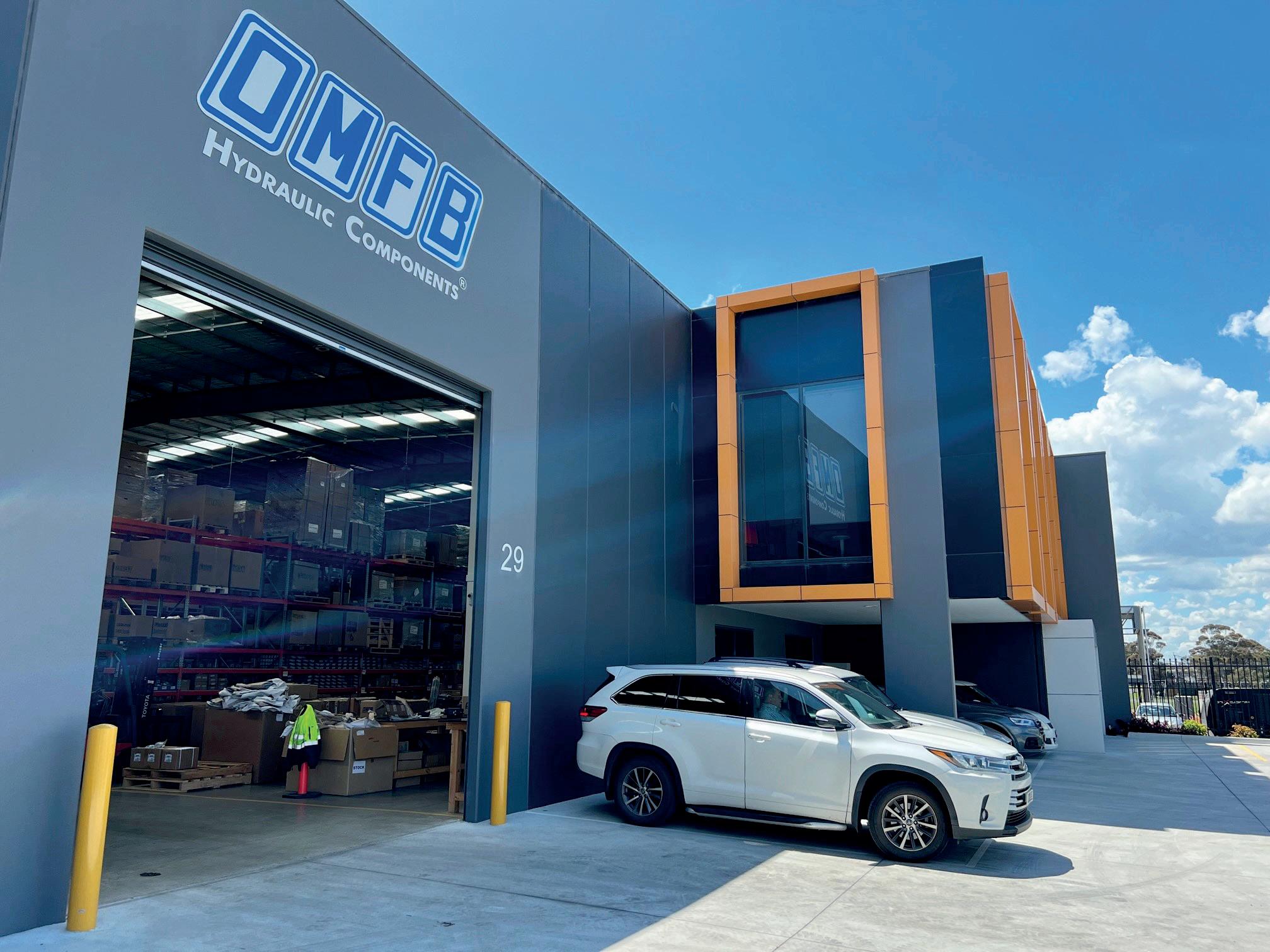
SERVICE, PARTS AFTERMARKET SHOWCASE 58 August 2023
The new electric Hoist Safety Valve.
OMFB production facility in Tullamarine.
ZLE
In December 2021, OMFB Pacific announced that it would be offering a new purpose-designed valve which would deliver “unrivalled hoist lowering speeds” for tipper applications. And as Christmas approached, the team at OMFB Pacific was confident that the pneumatically piloted Hoist Safety Valve (HSV) would, upon its arrival, offer the best performance in the market.
Almost two years down the track, with thousands of valves already providing reliable service to the fleets of many Australian owners and operators, OMFB Pacific Product Manager, Gary Butler, says the valve has achieved what it set out to do.
“The pneumatic valve we announced back in 2021 is now in the market, and it’s been very successful,” he says. “Since then, we’ve been working on an electric version as well.”
The electric HSV, among OMFB Pacific’s other offerings, was showcased for the first time at this year’s Brisbane Truck Show. All valves on display were manufactured to exacting standards, ensuring high levels of safety and reliability. It’s no surprise, after factoring in the HSV’s high flow rate, that it offers the fastest lowering speeds on the market and minimal pressure drop.
“We wanted to highlight the new product at the Brisbane Truck Show and that we’ve now got an electric option, so that kind of completes our offering for safety valves,” Gary says.
Prior to its release in the market, OMFB Pacific’s HSV went through a series of
local testing to make sure the product was performing to the highest standards before being released. The feedback, Gary says, was unparalleled.
“It’s doing what it was made to do,” he says. “It is already benefitting customers through its reliability and, as we like to think through all our products, by not giving them trouble.”
A common problem encountered with many valves in the industry is that they can slow the descent speed of the tipping hoist. This is eliminated in the electric HSV, as it was specifically designed to combat this issue.
“Whilst being a compact valve, it’s still rated at 120-litres a minute,” Gary says. “This is important, because with a good flow rate, it’s not going to affect the descent speed of a hoist. We wanted it to be reliable. So, when a body’s being lowered, it’s not going to slow it down.”
The valve also includes an emergency override feature, meaning that in the unlikely event of an electrical failure, operators can still get the tipper body down.
The solution was also developed in-house from the ground up, solely by OMFB Pacific for tipper applications. This is a key differential for the Italian manufacturer. “Everything we offer is an in-house product, so someone buying an OMFB system is getting a genuine OMFB system,” Gary says. “We’ve got our own quality department and we take care of everything on our side. So, if we do ever have a
problem with a product, we can investigate it and solve it very quickly.
“I think the fact that we’re not relying on third parties, that we’re responsible for our own supply chain and that we hold stock locally means we can respond to anything.”
The Deutsch connector is widely regarded as one of the most reliable electrical connectors in the industry, which is why OMFB Pacific has it fitted to the new HSV unit. As opposed to a DIN connector, which Gary says isn’t as reliable, the Deutsch connector is weather- and dustproof to offer ultimate durability. In addition, the plug which is required to join onto the wires powering the valve is also included with the HSV to give OMFB customers a complete package, eliminating the need for them to source their own plug. This process of offering a complete solution – coupled with the fact that OMFB Pacific has the ability to create a product from the ground up within its own walls – is where Gary says the team provides a key point of difference within the market.
“Some people might have a product that they’ve designed, but it’s still manufactured by a third-party, whereas that’s not the case for us,” he says. “So many of our competitors only deliver part of the jigsaw, but none of them deliver virtually 100 per cent like we do. With this product especially, we’re showing the industry that we can really complete the full picture.”
primemovermag.com.au 59
THE GENUINE
With a striking range of accessories specifically manufactured for the Australian-made Kenworth K220, operators can take their rigs to the next level with PACCAR Parts.

The K220 is the most evolved, refined, and technologically advanced Kenworth truck yet. It’s also one of the most customisable units, thanks to a range of specifically developed Kenworth Genuine accessories. In addition to the well-established and popular range of high-quality Kenworth Genuine accessories such as lighting, mudflaps, hub caps, wheels, and more, the K220’s new range of stainless-steel accessories is where operators can really take their rigs to the next level. PACCAR Parts Australia Aftermarket Engineering Product Manager, Brenton Campbell,
describes the range of accessories as being about as Kenworth as you can get. “These accessories have been designed jointly in collaboration with PACCAR Parts, Kenworth Engineering and our local Original Equipment (OE) suppliers, so they’re designed by Kenworth, for Kenworth, and made by the same suppliers who produce the rest of the parts for the trucks,” he says. Included in the range is a stainless-steel cab-step trim set with five light inserts, wide stainless steel fuel tank straps for both round and rectangular tank styles and a stainless steel AdBlue tank cover. The K220 grille bar kit, with its
distinctive eight-bar design, gives the new Kenworth even more road presence and can be further enhanced with a polished stainless steel number plate surround, including the Kenworth logo in both standard and slimline sizes. “Sunvisors are exceedingly popular, with a huge percentage of trucks being fitted with this option, so it’s great that we now have a top-notch offering for this new model,” says Brenton. “The sunvisor is a direct replacement for the factory first fit item and utilises the original OE mounting points, so there’s no drilling of the roof required. It’s just a simple matter of taking the old visor
SERVICE, PARTS & AFTERMARKET SHOWCASE 60 August 2023
Kenworth K220.
off, putting new mounting brackets and a new visor on, and away you go.”
Items like the sunvisor, cab-step trim set, grille bars and AdBlue tank covers are all very popular out in the market, according to Brenton.
“These are OE-designed and OE quality aftermarket parts that are unique to Kenworth,” he says.
Another new item that Brenton believes will be a popular K220 accessory choice is the wide-look stainless steel fuel tank strap for round and rectangular tanks, which are 75mm wide compared to the standard 48mm straps.
“Lots of people get modifications made
to their straps for this wider look, and we now have fully functional wide straps that are direct replacements for the OE parts – and they look tough,” he says.
In addition to the extensive range of exterior accessories, the K220 also comes with Kenworth Genuine comfort and care accessories designed to make every journey more enjoyable. These include the Kenworth Genuine dash mat with logo, wind deflector kits for both doors, cool and comfortable sheepskin seat covers with logo in a range of colours, a cotton mattress protector with logo to keep your bunk
spic and span, and a large Kenworthbranded first aid kit.
The Kenworth Genuine Accessories range is available through PACCAR Parts dealers Australia-wide and have been designed to be easily fitted by the dealership as part of the pre-delivery process, or when the truck comes in for service.



The Kenworth K220 Genuine accessories range is available at any of the 57 PACCAR Part dealer locations nation-wide.
“Call in and chat to the friendly team who will be happy to showcase the new products,” says Brenton.

primemovermag.com.au 61
Brenton Campbell.
ARTICLE
Stainless steel sunvisor.
Fuel tank straps.
SPECT RIGHT ACROSS THE
Caltex returns with first-class business solutions.
Caltex has been a dependable partner for generations across Australia, with the brand ready and committed to support customers, partners and suppliers in a whole new way. Backed by Chevron – one of the world’s leading energy companies with more than 70 years of history in Australia – Caltex offers its customers highquality fuels, engine oils, lubricants and more, including the new fully adaptable StarCard fleet management system. Supporting this, Caltex is currently strengthening its distribution network, ensuring the prompt supply of products, to keep the country moving.
Following Chevron’s acquisition of Puma Energy (Australia) Holdings three years ago, which included a national network of
retail locations, they’re now embarking on a rebranding project which will see most Puma Energy sites change to Caltex by the end of the year.
Beyond the retail experience, Caltex offers innovative industry-leading technology, such as the specially formulated fuel system-cleaning ingredient Techron, which is available in every fuel grade — helping to deliver maximised power, better fuel economy, better acceleration, a smother drive, and reliable performance to car engines.
On the lubricants side, diesel engines will experience Caltex Delo ISOSYN Technology, the brand’s high-performance diesel engine oil offering, while Havoline will be available for petrol engines. By offering a comprehensive fuel and
lubricant offering, Caltex provides a one-stop-shop, with solutions available for every kind of application, from construction to mining, agricultural, power generation, transport, and global marine.
Top-tier lubricants and fuel that keep you moving
Protecting your investment in plant equipment with high-quality lubricants simply makes sense. Caltex Delo with ISOSYN Technology, helps protect vital diesel engine parts, provide engine durability and extend service intervals, to help minimise operating costs.
Drawing on over 88 years of expertise, ISOSYN Technology combines premium base oils with high-performance additives to deliver engine component protection

INDUSTRY 62 August 2023
RUM
 Delo is a multipurpose motor oil formulated in 1935.
Delo is a multipurpose motor oil formulated in 1935.
power to your wheels.
Caltex Diesel with Techron D helps keep fuel injectors clean, protect against corrosion and reduce foaming while filling up. In diesel engines, the fuel injector nozzle can be as narrow as the width of two human hairs, and with these injectors usually located inside the combustion chamber, they are exposed to extreme heat, and are, therefore, more vulnerable to deposit formation than those experienced in a petrol engine.
StarCard streamlines business operations


The new Caltex StarCard is a powerpacked fuel management card offering a convenient way to increase fleet management efficiency. It provides a wide range of adaptable features to manage fleet and personal expenses and is wholly suited to the ever-
changing requirements of working in the construction industry. It has two main options, either ‘open’ or ‘close’ loop. Open loop provides the ultimate coverage allowing access to all Caltex and Puma Energy service stations, and being welcome wherever WEX Motorpass cards are accepted. In short, this means it can be used it at over 6,000 service stations and industry partners Australia-wide. Open Loop StarCards can also be used wherever Cabcharge is accepted and for services at Magic Hand Carwashes.
A closed loop card means businesses can avoid paying transaction fees while enjoying access to the full range of Caltex with Techron fuels. Both options can be set up for specific drivers and vehicles, with PIN protection available too.


Additionally, StarCard provides a range of perks and discounts from leading








tyre retailers, vehicle parts and accessory retailers, vehicle servicing providers and accommodation houses.




StarCard is another solution offered by Caltex to keep businesses in control and allow operations to run smoothly.
Caltex: your business partner to move forward


Caltex is committed to the Australian market and making its products available to customers where and when they need them. Whether you’re running the family car, the construction site or the company fleet, Caltex is there to support you with expert advice and fuel equipment solutions, quality bulk fuel supply, premium engine oils and reliable lubricants.
To learn more about Caltex visit www.caltex.com/au/business-solutions
64 August 2023 INDUSTRY
Delo products are sold in 155 countries.
Isuzu Service Agreements really help take a load o .



























































































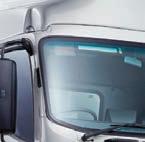


































































































The last thing anyone needs is an unexpected bill landing on their desk. But with an Isuzu Service Agreement, you can choose from three packages to fit your needs and flatten your servicing costs into a single, predictable, monthly payment. Plus, you’ll have the peace of mind knowing that you’re helping to meet your chain of responsibility requirements. And that all means a big load o your mind. To find out more, visit isuzu.com.au or see your nearest Isuzu Truck Dealer. Care. It’s what we do.










FSA/ISZS1663
GROWN HOME

TEST DRIVE 66 August 2023
An interstate trip from Melbourne to Adelaide pulling a pair of Collins Transport refrigerated trailers proves a breeze for the new Kenworth K220.
The Kenworth K220 supersedes the K200 which has been around for more than 12 years. This new model takes some big steps to achieve the next level in the evolution in PACCAR’s cabover. The K220 model commenced production in April 2023 and is expected to remain Kenworth’s cabover offering until at least the end of the current decade.

The most significant exterior change is the cab’s roof design which improves aerodynamic efficiency by a claimed four per cent. In most circumstances, where average speeds are high enough to benefit from a more slippery shape, that will translate to a fuel efficiency improvement of around two per cent. The vista windows of the K200 have been deleted for the K220 which contributes to improved sleeper cab insulation and a more easily maintained cabin temperature by the new climatecontrolled HVAC system which is similar to the one developed for the Kenworth T610. The lower positioning of the dash vents delivers an ideal amount of temperature-controlled airflow into the cab without blowing it directly into the driver’s face. The weather is reasonably mild for this trip from Melbourne to Adelaide and we don’t get to experience the HVAC’s performance under extreme conditions, so we just set the dial at 22 degrees and enjoy the comfort.
The K220 is available in 1.7m day cab, a 2.3m aerodynamic roof sleeper, a 2.3m flat roof sleeper and 2.8m aerodynamic roof sleeper versions. Our truck for this trip is the 2.3m aerodyne and we have hooked to a B-double set of Collins Adelaide’s refrigerated trailers loaded with chilled and frozen goods destined for Woolworth’s South Australian stores, with the combination grossing just over 58 tonnes. Since their launch in 1971, the Kenworth K-Series have traditionally been considered “drivers’ trucks” and this heritage still carries over into the K220. The ISRI air suspended seat has increased fore and aft adjustments
and the pedals are relocated to a more forward position to provide additional leg room.
An essential element of the K220’s engineering brief was the integration of the multiplex electrical architecture which is essential for the communications of the sophisticated electronic systems required to support safety features such as Autonomous Emergency Braking which is a key function of the Bendix Fusion system. Autonomous Emergency Braking is available as an option until 2025 when it will become a standard feature as per Federal legislation.
The K220 provided for this test exercise is a pre-production unit and is fresh from having its Bendix Fusion system electronics upgraded and recalibrated to the latest Version 2.9 and has an extensive list of safety acronyms such as ABS, ESP, EBS and lane departure warning. The Active Cruise Control not only makes driving easier but adds another level of confidence when sharing the highway with other traffic; and is capable of bringing the truck to a complete standstill in an emergency situation by using the engine and service brakes without any input from the driver. The new 8-inch Audio Visual Navigation (AVN) unit provides an easy access display with intuitive controls for truck navigation, the audio system, and smartphone mirroring. The AVN can be integrated with up to six external cameras giving drivers full visibility of what is happening around the truck. To further help drivers remain focused on the road, the AVN is integrated with the steering wheel controls and the driver’s phone can be stored safely on either the induction charging pad, or in one of the convenient storage pockets in the new dash. Kenworth has long employed good quality switch gear and in the K220 the various toggle switches are arrayed in a logical sequence from the factory, but thanks to the multiplex wiring their functions can be quickly customised as each switch has its own
primemovermag.com.au 67
Kenworth K220 2.3m aerodynamic sleeper cab B-double.
IP address and retains its function even when relocated to another socket on the dash. Much of the interior is in common with the wide conventional T610 model which is destined to receive the K220’s digital dash. The main instrument panel is a 15-inch high-definition electronic screen, with analogue gauges for air pressure and driveline temperatures located on a panel positioned to the left of the driver which manages to maintain a level of heritage appearance in combination with the latest high-tech approach to delivering information. The main instrument panel displays early intervention warnings for the driver. At the start of each shift the K220 will perform a comprehensive Systems Check and with it also provide an end of shift detailed trip and vehicle summary including statistics such as average fuel economy, idle time, and cruise control usage as well as any potential mechanical issues. The K220 essentially monitors itself and can deliver immediate warnings should anything amiss be detected.

The screen can be configured to deliver a variety of displays ranging from rudimentary speedo and tacho images to quite intensely detailed informational readouts. There is also a function which provides coaching advice to the
driver to maximise performance and efficiency. The digital display is able to be customised and is readily controlled by buttons on the new generation SmartWheel which, with its attendant stalk controls, provides fingertip control of an expanded range of vehicle functions and settings. The K220 comes with the propriety PACCAR Connect telematics system which manages driver and truck performance as well as its global location in order to get the best results.
Other controls include the “duckbill” trailer brake lever that we utilise to perform the essential tug test prior to pulling out of the Collins depot in Melbourne. This electronic control can also be used in place of the hill start assistance which can be turned off if desired.
The long taper leaf front springs, in combination with the Airglide rear suspension, produce a smooth ride even on the very rough sections of the highway as we approach the SA border. A cab suspension system is currently being developed which will offer even further improved ride characteristics. Motive power comes courtesy of a Euro VI Cummins X15 rated at 565hp and providing 1850 lb/ft of torque. This ‘performance’ version of the red 15-litre
engine has long legs and the interaction between the engine and the Endurant transmission is impressive. Backing up the Cummins is Eaton’s latest Endurant XD Pro 18-speed automated transmission which is 100kgs lighter than the Eaton UltraShift it replaces and has the advantage of being designed as an AMT from its conception rather than an enhanced manual-based gearbox. The engine/transmission interaction is seamless due to the sophisticated integration of those major components with input from various sensors fitted to the truck.
As we approach the end of this trip, we still have to negotiate the almost infamous Adelaide Hills descent, which is reputedly the longest and steepest main highway descent in the country and includes the Heysen tunnels. Being very conservative, we switch to manual mode by touching the button on the end of the right hand side wand and toggle down to 10th gear. As we begin the descent, we are able to hold speed at 28-35 km/h by simply swapping between the first and second stage of the Jacobs brake. We could have done it in a higher gear and maintained a speed closer to the 60 km/h truck limit, but discretion is the best part of valour. At no point did we consider it necessary to apply the third stage of the Jake or even consider touching the brake pedal. The third stage is activated by pulling the wand back against its spring detent which triggers a transmission downshift to deliver even more compression braking, but without the risk of over-revving the engine. If necessary the retardation could have been further increased by manually flicking on the engine fan. At the conclusion of the downhill journey the engine temperature is just above 80 degrees with no heat soak affecting the refrigeration unit on the front trailer as might be the case from a transmission retarder.
The K220 is a uniquely Australian product and reflects the engineering and manufacturing abilities available in this country.

68 August 2023 TEST DRIVE
The dash features a 15-inch highdefinition instrument panel.

MEGATRANS is Australia’s largest integrated conference and exhibition dedicated to the logistics industry. MEGATRANS will showcase the latest in artificial Intelligence (AI), robotics, automated racking, telematics and route optimisation, warehouse automation, intelligent fleet systems, blockchain, Internet of Things, big data and advanced analytics. megatrans.com.au REIMAGINING THE SUPPLY CHAIN MEGATRANS returning 18-19 September 2024 BOOK YOUR STAND TODAY
Melbourne Convention and Exhibition Centre
BULLDOG SKIN
Since he joined Volvo Group Australia in 2015 Tom Chapman has held a variety of senior positions culminating in his appointment as Vice President, Mack Trucks Australia, in April 2021.
Prime Mover: 2021 was a challenging year as COVID impacted businesses and people. Two years on, what’s good about Mack?
Tom Chapman: We’ve got a lot of good things to talk about such as 60 years of manufacturing Mack Trucks in Australia, which is something we are super proud of. It’s a milestone that not too many businesses get to celebrate.
PM: Just a few months prior to you taking up the reins, the Mack Anthem was launched in Australia. How is its progress a couple of years down the track?
TC: The Anthem has been a huge success story for us and we need to act less surprised when people tell us how good it’s going for them. The fuel performance in particular is exceptional, and customers are getting fantastic results.
PM: Some people were initially hesitant when it came to the Anthem. Are the ones who took the most convincing now among the biggest advocates?
TC: Its looks were somewhat polarising when it was first launched. I think it’s a truck which looks better in the flesh than it does in the photos. And it looks even better on the road.
PM: There were people out there who weren’t sold on the looks?
TC: Purely, aesthetically-speaking, they weren’t convinced. But the fuel performance speaks for itself. Some people were not interested because of the looks, but they hear stories from other operators about the fuel results they are getting, so the word is spreading and the more you see of them on the road, the more enquiries there are. Demand is super strong.
PM: What were the reasons behind Anthem’s big presence at this year’s Brisbane Truck Show?
TC: Obviously we introduced the Anthem a few years ago and we got off to a bit of
a false start because we launched it, and then shortly afterwards COVID hit and all of the launch events we had planned around the country were all locked down. We don’t need to go back over all that but we thought it was worth putting the Anthem here again to really push the point about its 34 pallet B-double capability. You can have a bonneted truck in front of a 34-pallet East Coast linehaul spec truck with a good sleeper, and have the aerodynamic benefits of a bonneted truck, along with a nice ride with its long front parabolic springs. It’s been a huge success story and we’re not done yet with this truck.
PM: What else is in store for Mack?
TC: We’ve been a very strong vocational construction and mining brand for a long time and we’re going to continue to play in that space. We’re not going to give up an inch, but this is an opportunity to really bolster our on-highway offering particularly our East Coast linehaul. The Anthem’s slippery design means it’s not a very thirsty truck. Using less fuel is a good means of being sustainable and is a great place to start.
PERSONALITY PROFILE 70 August 2023
It’s a milestone year for Mack Trucks Australia, as Vice President, Tom Chapman discusses in detail.
PM: The mDRIVE transmission took a fair bit of selling initially. Is the current version getting a good reception?
TC: When we launched the Anthem project it included the massive electrical architecture upgrade which went across the entire Mack range. That took us to the next generation of mDRIVE transmissions which unlocked all the potential of features such as crawler gears. The upgrading of the electrical architecture means the engine and transmission talk to each other much faster than they ever did. The gear changes are snappier and quicker. It’s almost seamless and that is contributing to the fuel performance as well. With the launch of the Anthem, we caught up with the latest generation and the way the engine and transmission performs, is now on par with the other Volvo Group brands.
PM: The vocational side of the industry has attracted some OEMs which didn’t previously operate in that space. Does that present a threat or an opportunity?
TC: Both really. For us, the Mack Metroliner, in an agitator application, has been a tare weight champion while not compromising on durability. Others have
tried to go light and they just haven’t held up like the Macks have. There is definitely an opportunity and we’ve seen a real shift towards 10x4 as opposed to 8x4 and that really lends itself well to the Metroliner. With our local manufacturing capabilities, we’ve got that flexibility to offer either pusher or tag axles, lift-up or fixed, whatever they want. We can do it all locally in the factory and there is no retro fit.

PM: Has there been a conscious effort to provide a broader mix in the Mack product line up?
TC: We’ve got all models firing on all cylinders now. Metroliner sales were quite cyclical by being linked to major customers such as Hanson and Boral leading to big year, quiet year, big year, then quiet year numbers. We are now less tied to the construction industry by being more present on the highways, and also in mining and construction. It’s a healthier mix and it’s a smarter business mix.
PM: What is the biggest challenge currently?
TC: The challenge? Just building them and getting them delivered at the moment.
Production has been very stable so that’s under control but once you build a truck it’s got to go through other workshops that are at absolute capacity to get items such as bullbars and turntables fitted. Just getting it delivered is a challenge.
PM: Does Mack’s strong heritage in this country still matter?
TC: The history in the Mack brand is so rich. People have this massive appreciation for it, so for us, to be honest, one of the challenges in my role is to get people looking forward and not reminiscing about the ‘good old days’. We are in a really good situation now and the current product line up is performing so well that people get excited about the comfort and quietness in the cabs as well as the fuel efficiency. The Mack brand is in a really good position and I think it’s going to go to new heights. As we get through the end of 2023 and into next year, I genuinely believe we’re going to go to new levels now we’ve got a healthier product mix. Fitting in front of a 34-pallet combination is what you need to do in order to play in the biggest part of that market which is East Coast linehaul. We are definitely there now.
primemovermag.com.au 71
Tom Chapman.
SPECIAL FORCES
In her new role as Head of MercedesBenz Special Trucks she is in charge of the development, production and sales of the Mercedes-Benz models Unimog, Econic and Zetros based in the German city of Wörth, as well as the Custom Tailored Trucks (CTT) business unit in Molsheim, Alsace/France, for individual customer conversions.

Franziska Cusumano joined the Daimler group in 2008. She started in the operations field of the company’s foundry business in Mannheim, Germany and also in South Africa. This was followed by various positions in research and development at the Fuso Global Hybrid Centre in Japan, as well as Product Management Mercedes-Benz and Platform Management for Engines and Axles. In 2018, Franziska took on the role as Executive Assistant to the Chairman of Daimler Truck. In addition, she became Chief of Staff and Head of Corporate Office. With the spin-off of the truck division in 2021 Franziska also became responsible for the Board of Management and the Supervisory Board and its committees. Besides her Bachelor’s degree in International Business, Franziska holds a Master of Science from the Columbia University, New York, having specialised in transportation and future mobility as well as environment and sustainability.
Although there might be a perception, understandable to a point, that many of the applications for these vehicles are for off road use, the Special Trucks division is involved at the leading edge of low and zero emissions technologies.
The Mercedes-Benz Unimog has been very successful for a long time in many parts of the globe and very recently a prototype version powered by a hydrogen-fuelled internal combustion engine has been undergoing practical assessments.
Mercedes-Benz Special Trucks has also recently been instrumental in the development of the eEconic as a practical battery powered urban refuse collection vehicle that was showcased at the Brisbane Truck Show, along with the Mercedes-Benz eActros with which it shares its electric drivetrain.
“With the eEconic we are very confident we have a very good product we are going to develop further over the next months and years,” says Franziska. “It is our big new baby and we are really proud of it. It’s the first product in our Special Trucks portfolio that we are taking to the zero emission world. It’s
not just about a different drivetrain, we are entering into a new ecosystem.” Unlike the current situation in Australia, charging infrastructures and financial subsidies are being put in place in many European countries to encourage the take up of zero emission vehicles. “We see movement in each of these factors right now and we are trying to influence from our side as much as we can by working together with government and municipalities who put the infrastructure in place and also provide subsidies,” notes Franziska. “The eEconic did change the game a little bit and there was some hesitation in the market because it needs a much bigger ecosystem of support.”
At the production site in Wörth/Rhein, Mercedes-Benz Special Trucks has been combining its expertise in flexible smallseries truck production for specialised industries such as municipal, firefighting, and agricultural applications for more than 20 years. Currently, total production is around 5,000 trucks per year with an anticipation of further increases in the next few years. This also includes the Custom Tailored Trucks (CTT) business unit located in Molsheim, Alsace/France where CTT provides complex, individual customer solutions for bodies and conversions. Within Mercedes-Benz Trucks, CTT is the key account for special customer requests and with its expertise has the capabilities for precisely fitting and unique solutions.
PRIME MOVERS & SHAKERS 72 August 2023
Franziska Cusumano took over responsibility as Head of Mercedes-Benz Special Trucks and Custom Tailored Trucks on December 1st, 2022.
Franziska Cusumano.
A strength of the Mercedes-Benz Special Trucks operation is its ability to be nimble yet that feature also presents some of its main challenges.

“It’s also the scale and how long it takes for the development. We have to be much faster a lot of the time because the volumes are much smaller,” says Franziska. “If there is a tender for 50 or 100 trucks you need to have different processes to quickly adapt to those very specific and different enablers. With Special Trucks every customer is special.”
Franziska is pragmatic about future developments in vehicle battery technologies as well as the necessary infrastructures to accommodate the increasing use of zero emission commercial vehicles.
“The battery cell chemistries that we are using at the moment come with a lot of advantages, but also disadvantages like energy density,” she says. “Going forward, for the next couple of
evolution steps we are looking at different cell chemistries and from that there will be a jump in the range. There are some other batteries currently in the research phase which all the big cell manufacturers are looking into.” But range is not going to double.
Franziska makes that very clear.
“We all remember when we were back in high school learning the Periodic Table in chemistry where the maximum you can go is from the upper left corner to the lower right corner,” she says. “That is the maximum number of elements in the world that can possibly be put together in a chemical chain to create a battery cell. In long haul applications a big challenge is the infrastructure, because without that in place, either for battery-electric or hydrogen, you’re not going to have the trucks on the road.”
While heavily invested in the zero emission future and as passionate
to convey its importance as anyone, Franziska, at the same time, acknowledges there are fundamental challenges ahead.
“No one buys a truck because they want to buy a truck, people buy a truck because they need to make money with it,” says Franziska. “If it’s not getting to a business case and if it’s not going to reach cost parity going forward, it’s also not going to be something that’s viable for the future.”
Despite her relatively young age Franziska has the confidence of Karin Rådström, CEO Mercedes-Benz Trucks, who observes a great leader with broad expertise.
“I am convinced that with her passion and dedication to deliver the best products and solutions for our customers she will continue to build on the success of Mercedes-Benz Special Trucks and take the business to the next level,” says Karin.
Mercedes-Benz U 427 with front-fitted crane.
TOYOTA TO ADD ‘MILD HYBRID’ 48-VOLT TECHNOLOGY FOR 2024 HILUX
Toyota is set to offer approximately 10 per cent fuel economy improvement for certain HiLux models. This is in comparison to the current 2.8-litre turbo diesel variants, when upgraded versions fitted with 48-Volt Technology arrive in the first half of 2024.

The 48-Volt Technology will be combined with the 2.8-litre turbo diesel engine and six-speed automatic transmission and comprises an additional 48-Volt battery, small electric motor-generator and other components required to control the hybrid driveline.
In addition to delivering improved fuel economy, 48-Volt Technology will also enable a stop/start system, improved
driveability and reduced noise, vibration and harshness.
Toyota Australia Vice President Sales, Marketing and Franchise Operations Sean Hanley said the introduction of 48Volt Technology to HiLux demonstrated Toyota’s commitment to reducing the fuel consumption of its vehicles without compromising on the performance and capability demanded by customers. “We are continually striving to reduce the fuel consumption of our vehicles to help reduce on-going costs for customers, as well as helping reduce our environmental impact, and the addition of 48-Volt Technology to our biggest-selling vehicle line will contribute to this,” Hanley said.
“This new technology will not only improve fuel consumption, but customers will also benefit from enhanced on and off-road performance, making the HiLux even more appealing for a weekend away or longer term excursion into the outback,” he said. The 48-Volt Technology will be fitted as standard to all 4x4 SR5 and Rogue Double Cab models and be available as an option for 4x4 SR Double Cab. The addition of 48-Volt Technology will not have any impact on the capability of the HiLux with the 4x4 models, maintaining their 3500kg braked towing capacity.
Toyota confirmed further details will be provided closer to launch in 2024.
DELIVERY NEWS
70 August 2023
Toyota HiLux will introduce 48-volt technology next year.
AUSTRALIA POST OPENS NEW BALLARAT FACILITY
Australia Post has just opened its new parcel delivery centre in Ballarat, deepening its long-term investment into the key regional hub.
The modern 13,024 square-metre centre, built to accomodate parcel volume growth in the region, will improve turnaround times and help process more than 8,000 parcels a day – and up to 20,000 during peak periods like Christmas.
According to Australia Post, the new parcel delivery centre has also been built with future expansion in mind.
The Ballarat centre will introduce the latest in automated parcel sortation technology, which will be installed early next year. This new sorter will reportedly have the ability to sort a further 3,000 parcels per hours, boosting the site’s overall capacity.
The automation will also reduce manual
handling and improve safety for team members.
Australia Post Executive General Manager Network Operations, Rod Barnes, said the multi-million-dollar investment into Ballarat and its surroundings reflects Australia Post’s commitment to improving services for the community.
“As one of Victoria’s biggest regional cities, we’ve seen parcel delivery volumes increase by 80 per cent over the past three years, with data indicating that four in five Ballarat households are now shopping online,” he said.
“We expect this trend to continue, as the needs of local and other ecommerce businesses grow.
“Our new centre will enable faster parcel processing and turnaround times, getting deliveries to customers’ doors sooner.”
Replacing two former temporary delivery
centres at Bakery Hill and Wendouree, the larger, consolidated centre provides Australia Post team members with indoor space to load their vans and get parcels efficiently on the road to customers.

Minister for Infrastructure and Member for Ballarat, Catherine King, who officially opened the new parcel deliver centre today, said Australia Post’s latest investment was a vote of confidence in the future of Australia Post in regional Victoria.
“Australia Post and its hardworking staff have been at the heart of the Ballarat community since our first Post Office opened in a tent in Golden Point way back in 1851,” she said.
“This investment will give local Ballarat workers the facilities they deserve, as well as helping ensure our parcels and letters arrive safely and on time.”
deliverymagazine.com.au 71
AusPost workers at the new Ballarat facility.
DHL Supply Chain has announced the appointment of Brindha Pillay as Chief Financial Officer (CFO) of Australia and New Zealand (ANZ), who will now succeed Craig Roberts.

The contract logistics solutions company said Roberts had been an invaluable member of the DHL Group for almost three decades and he will relocate to undertake a DHL role overseeing Europe, the Middle East and Africa (EMEA).
Pillay, who has been a strong contributor to the organisation for more than 15 years, started her DHL career as National Finance Manager.
“I have every confidence in Brindha’s abilities to step into the CFO role with her strong business acumen, developed in key finance roles both in Australia and internationally,” said Kwok-wai Lee, CFO, Asia Pacific, DHL Supply Chain. “I have worked closely with Brindha and Craig over the years and have seen first-hand their excellent contributions to the DHL Supply Chain business.”
Prior to this role, Pillay was the Senior Vice President, Global Head of Accounting and Process Digitalisation Finance at DHL.
“I am excited to take on the role of CFO for DHL Supply Chain in ANZ and continue to champion excellence in the office of finance across the business,” she said in a statement.
“Craig has built a strong finance organisation, and I’m committed to driving value for the organisation – focusing on strong financial performance, process innovation, and
MAZDA DEEPENS PARTNERSHIP WITH PANASONIC ENERGY
Panasonic Energy and Mazda Motor Corporation have agreed to enter into discussions on establishing a medium- to long-term partnership to meet demand for battery EVs and automotive batteries in a rapidly expanding market. Panasonic Energy and Mazda will commence concrete discussions with a view toward Panasonic Energy supplying Mazda with automotive cylindrical lithium-ion batteries manufactured at Panasonic Energy’s plants in Japan and North America.

Mazda, meanwhile, will, as part of the arrangement, look to install batteries procured from Panasonic Energy in battery EVs scheduled to be launched in the latter half of the decade.

“As the automotive industry rapidly advances electrification and is leading in this technology, collaboration with Mazda will be a major step toward
the achievement of our mission of realising a society in which the pursuit of happiness and a sustainable environment are harmonised,” said Kazuo Tadanobu, President, CEO of Panasonic Energy. “With our superior technology and extensive experience,
transformative growth.”
Pillay has, during her time at DHL, championed several strategic initiatives, including the creation and implementation of the first key milestones of the overall strategy for the Accounting Function, globally.
“It gives me great pleasure to pass the torch to Brindha, whose exceptional skills and dedication will undoubtedly drive continued success for DHL Supply Chain in ANZ,” said Roberts.
“I couldn’t think of a better person to succeed me and have full confidence in her ability to continue driving strategic value for the business. I’ve been working very closely with Brindha to ensure a smooth and successful transition.”
Roberts has been a valued member of the DHL group for nearly 30 years, first joining in 1995 as a Financial Accountant in South Africa. He held various CFO positions in APAC and EMEA before relocating to Australia in 2017 to lead the financial operations across ANZ.
we will drive growth of the lithium-ion battery industry and further accelerate our efforts to achieve zero emissions.” As part of its electrification initiatives, Mazda is working with its partners in three phases to flexibly respond to changes in regulatory trends, consumer needs, and other areas. “We are delighted to collaborate with Panasonic Energy, which has been a pioneer in automotive lithium-ion batteries, and developing high-quality products. We will keep contributing to curbing global warming through various initiatives including our electrification strategy,” said Masahiro Moro, Mazda Director and Senior Managing Executive Officer.
The Panasonic Group and Mazda have built a relationship over many years. In 2012 Mazda installed Panasonic batteries in its Demio EV, a vehicle the company had leased in Japan.

72 August 2023
DHL APPOINTS NEW
CFO
ANZ
DELIVERY NEWS
Automotive cylindrical lithium-ion batteries.
Brindha Pillay.
RENAULT MASTER

cargo carrying powerhouse

with up to 17m3 of cargo volume and a choice of configurations, there is a Master Van for any business. plus, Master keeps your business going with a 100L fuel tank and long service intervals.

renault.com.au OVERSEAS MODEL SHOWN
PAST THE POST
By 2032, addressed letter volumes are expected to fall below 500 million annually. The average household, consequently, will receive less than one letter each week. A decline such as this is expected to see addressed letters per postal delivery officer round per day fall from 640 to around 150. It’s an ongoing problem for Australia Post and one that points to postal delivery officers in the future having to support other viable, revenue generating services to secure sustainable employment.
With 9.3 million Australian households having shopped online in the 202122 financial year, online purchases were 11.9 per cent higher than the previous year. The online shopping industry in Australia has grown on average 20 per cent each year between 2017 and 2022, as nearly one in five retail sales are now done online. While e-commerce penetration is projected to grow, Australia still lags behind many international territories for online shopping frequency. This points to seismic activity over the coming decades if trends in South Korea, China, the United States and United Kingdom are anything to go on. When it comes to consumer behaviour they usually are.
Australia Post provides the largest business to consumer parcel delivery service in Australia and underpins

Australia’s $67 billion online retail sector. Its infrastructure and service options are essential to this day in many parts of Australia.
Australia Post delivered more than half a billion domestic parcels in the 202122 financial year, with parcel volumes in 2022, 69 per cent higher than they were before the COVID-19 lockdowns. Under a proposal lodged to the Federal Government’s Postal Services Modernisation white paper, Australia Post would partner in a work-sharing model with other parcel carriers in exchange for access to its vast network of parcel lockers and post office boxes. The plan would include paid access to distribution centres, delivery vans and bikes, locally owned post offices and parcel lockers, as well as Australia Post’s digital infrastructure, including delivery tracking and notification tools.
Delivery company Sendle and Team Global Express were among the businesses making a case for the work-share model.
Sendle was started in Australia back in 2014. At the time it had an ambitious vision to level the playing field for small businesses through shipping.
“Using Australia Post’s taxpayerfunded infrastructure more efficiently has got to be good for everyone,” said James Chin Moody, Sendle CEO. According to Sendle’s submission the entrenched functional monopoly that
Australia Post holds over Australia’s post and parcel delivery market has not only stifled competition and
FINAL MILE 78 August 2023
A work share arrangement with Australia Post that would open up its existing last mile infrastructure to third parties has been proposed to offset its failing letter business.
innovation but led to less choice for small businesses and consumers.
“For more than 200 years, Australia Post has effectively functioned as a gatekeeper: cutting out competing delivery companies and imposing high and varied fees on small business sellers,” Sendle said in a statement.

To ensure that postal and parcel services in Australia met the needs of the Australian community, it’s been proposed that Australia Post be opened up as a utility through public-private partnerships. This could lead to significant benefits for consumers and small businesses, as well as help to modernise Australia Post and keep it competitive according to Sendle.
Team Global Express – owned by private equity firm Allegro Funds – commissioned research by Lateral Economics to make the case for open access, finding their plan would provide $1.5 billion in economic benefits over ten years, including a more than $500 million benefit in cheaper delivery costs for households and create 2000 new jobs and reduce delivery costs for regional residents. Under current licensing, third party services are unable to access Australia Post distribution centres, pick up or deliver parcels, or access the vehicles they are delivered in. The report also recommended changing current regulations to allow the last mile delivery component
to be carried out by third party companies.
In metropolitan areas people can get parcels delivered in multiple places from multiple carriers. But in remote settings, like those in regional Australia, residents must depend on Australia Post as a single provider. An opportunity many logistics providers are likely to seize sits in waiting according to Team Global Express CEO, Christine Holgate.
“By opening that up what you start to get is people investing in more and more businesses,” she says. “All of the top five major postal operations in the world have this. So, it’s nothing new and what it does is create more work for posties and more work for community post offices.”
deliverymagazine.com.au 79
An Australia Post office in regional Victoria.
TAKE IT TO THE BANK
Last mile logistics is drawing big global backers.
Investors are taking notice of the last mile logistics race that is seeing businesses do whatever it takes to be the quickest resulting in a hot sector that is finding a lucrative spot in asset funds.
Two recent announcements in the Australian financial sphere have put the spotlight on last mile, not just as an important, fast-growing part of the logistics and transport industries, but as asset funds that are capturing attention worldwide.
Australian property investment manager Centennial recently secured backing from Brookfield, a Canadian multinational asset manager, in order to close a $700 million fund for last mile logistics assets. The fund targets both new acquisitions and
redevelopments of properties already held by Centennial.
The Sydney-based company is an independent Australian property investment manager that specialises in industrial and logistics (I&L) assets.
Founded by Jonathan Wolf and Lyle Hammerschlag, it has grown to become one of the leading I&L managers in Australia with this being its third global partnership deal since 2019. Centennial’s I&L portfolio includes a mix of core, value-add and development assets, generally found in key industrial and logistics markets. It has grown its assets to 63 properties in Australia worth more than $1.1 billion, as well as a development pipeline of around $360 million. This latest deal with Brookfield, called
Enhanced Value Partnership (EVP), is expected to allow the company to grow its assets to approximately $3 billion. The Australian company is putting four seed assets into the new fund, recapitalising three distribution centres in Brisbane and Melbourne, as well as an industrial park in Brisbane’s tightly held TradeCoast precinct.

“The partnership’s strategy is based on selecting niche, mid-sized or underperforming assets within urban, supply constrained markets that are generally overlooked by institutional investors due to scale requirements and management intensity,” said Centennial’s Executive Director and CEO, Industrial & Logistics, Paul Ford.
“Underscoring the strong fundamentals for the logistics sector is that Australia

LAUNCH PAD 80
A modern distribution centre in a commercial zoned estate.
has the lowest vacancy rate in the world at just 0.6 per cent. When you add factors such as Australia’s population being expected to grow by 4.2 million by 2032, e-commerce penetration levels and delivery models well below global peers and severe supply constraints, we only see continued outperformance for true last mile, inner ring warehousing and logistics markets.”
Brookfield backing Centennial is just one example that last mile logistics has gone from something that was once comfortably maintained by the postal service, to one of the fastest growing economies in the world.

Last mile logistics is, of course, the final leg of the supply chain, which involves delivering goods from a distribution centre to the customer’s door. With the expansion of e-commerce and online retail comes the need for faster delivery
undisclosed investor, bringing its first Last Mile Logistics Fund overall tally to $800 million, evenly split between committed equity and debt. Its fund picks from real estate assets that can be turned into last mile delivery infrastructure.
“We are delighted to reach first close and welcome a major new strategic capital partner for the first last mile logistics unlisted fund,” said HMC Head of Funds Management, Nicholas Harris.
“This is a high conviction strategy which we believe is unique, leverages our track record in this sector, and can be significantly grown in the future through further last-mile logistic fund series.”
Last mile logistics funds typically invest in a variety of assets, including warehouses, distribution centres, and last mile delivery vehicles. They may also invest in technology companies
saw a spike in private equity investments in the United States, compared to the previous years.
“The approach is either to seek out mature supply chain tech companies that can be reinvigorated by capital and end-to-end transformation, or to pursue deteriorating companies within supply chain that can be made more efficient through modern technology,” wrote report author, Joanna Choi, adding that storage businesses are one of the largest areas of supply chain-related private equity investment, because the growth of e-commerce is generating incredible demand for warehouses and distribution centres.
“The bet on the growth of online retail is a bet on more and larger fulfilment centres and, by extension, on logistics services related to tracking, inventory management, and last mile fulfilment.”
centres, popping up around the country,
81
Brisbane’s TradeCoast precinct is hot property at the minute.
Ihad two heavy vehicle owners complain to me in recent weeks about having to engage an engineer. Both vehicles had been modified. According to Section 86 of the Heavy Vehicle National Law (HVNL) a modification must be approved by an accredited vehicle engineer who is appointed by one of the road agencies. The position is called an Approved Vehicle Examiner (AVE). The engineer is required to assess the truck or trailer modification against the technical standard called VSB 6, the Heavy Vehicle Modification Code. A modification is defined in the law as: (a) addition of or removal of a component from the vehicle, or (b) a change to the vehicle from the manufacturer’s specification for that vehicle. Installation of a ‘modification’ that is a manufacturer’s option using original equipment parts does not need an AVE approval.
One heavy vehicle owner complained to me had purchased a route-service bus with the intention of making it into a motor home. At this time he wanted to pull out the passenger seats and install a couple of new twin coach seats. The twin seats have an approval in the ADR system and they came with integral seatbelts. They bolted into the original anchor positions on the bus. The applicable VSB 6 code is K1. The owner’s complaints are that it is hard to get an AVE quickly and the cost is $1200 + GST. The cost is excessive considering
Do
we really need AVEs?
the scale of the job. The second heavy owner’s complaint concerns the scale of the calculations needed for the AVE to approve the installation of a tip-truck body onto a rigid truck. The relevant VSB 6 code is J4 – tipper body design, which is applicable from 1 July 2023. Obviously, detailed calculations are needed to ensure the design is adequately strong. The procedure is complicated and likely to be expensive. The cost of $1200 + GST in this case is understandable.
The definition of modifications that are in the HVNL covers virtually anything that could be done to a vehicle. However, in practice, there are many modifications that probably do not need an engineer’s approval. For example, driving lights can be installed, a CB radio antenna could be attached to the mirror bracket, the original taillamp at the rear could be replaced with LED taillamps or sidelamps, non-genuine air cleaners can be installed, non-genuine brake lining installation, or a sun-visor could be fitted to the cabin above the windscreen. These modifications would probably be acceptable to a road-side vehicle inspector at face value. Some modifications do not need an AVE approval because they are low-risk modifications.
The costs of engineering (AVE) certificates has steadily increased over the few years. I estimate they have gone up by a factor of three from $400 (2010) to $1200 (2023). Some of the cost increase is due to additional complexity
with the AVE’s reporting procedures. Furthermore, the difficulty of finding an AVE and getting the inspection done shortly has become very difficult and this hampers business. The scale of modification work is huge. About half all heavy motor vehicles are modified when new. Perhaps 10% of vehicle get modified later in the after-market. The AVE resource is currently over whelmed. Do we need this added cost, delay and complexity ? My answer is only for high-risk modifications. The costs and complexity of the modification regulatory system has reached a level where it is no longer fit-for-purpose. Yes, we need AVEs, but not to approve all modifications.
There are many examples where regulators classify and regulate equipment safety according to risk. For example, domestic electrical equipment can be either prescribed-meaning an approval is needed from a regulator, or non-prescribed-meaning the supplier must ensure that the device meets safety standards but no approval is needed. The same is true for machines. For example a crane that can lift 10t needs an approval from a regulator, whereas a crane that can only lift less than 10t does not.
I propose that the VSB 6 codes be split into two categories – prescribed meaning an approval from an AVE is needed; and non-prescribed meaning the modifier must keep a technical file that justifies the design, but no approval from an AVE is required. My

82 december 2018 INSTITUTE
August 2023
PETER HART
MY LIST OF ‘PRESCRIBED’ MODIFICATIONS
Prescribed Modifications A - J
A1 – Installation of an engine that is not offered as original equipment in a similar vehicle.
A2 – Substitution on an exhaust reactor.
D1 – Installation of an additional axle.
E1 – Addition of an additional steering axle.
G3, G4 – Additional brakes due to installation of an additional axle.
G4 – Installation of an advanced braking control system (EBS)
H2 – Wheelbase extensions involving cutting of chassis rails between axle groups.
H4, H5 – Chassis ladder alterations for tip-trailer installation and crane installations.
J2 – Fitting a bus body to a truck.
J3 – Fitting a roll-over or falling object protection.
J4 – Tip-body design.
J5 (New) Tanker installation.
classification of VSB 6 codes that should be approved is shown in the Table. This is about one third of the scope of the VSB 6 codes. Space does not allow these other codes to be printed.
Codes that should not need an AVE certificate include: attachment of a tray; installation of a PTO, air supply to an accessory; moving the rear axle group back without cutting the rails; installation of approved seats and seatbelts onto original mounting points; exhaust pipe relocation; and installation of additional fuel tanks.
It is noteworthy that an insurance company might argue that a vehicle is unroadworthy unless every modification is formally approved by an AVE. The law should change to define what low risk modifications are acceptable without approval. The modifications domain is simply over-regulated.
It is notable that the Federal Regulator does not require the original (or secondary) equipment manufacturer of a new (ADR) vehicle to get any of its designs certified by an AVE (or
Prescribed Modifications K - V
K3 – Cabin conversion structural (when cabin carries people).
P1 – Towbar installations using unapproved parts.
P1, P2 – coupling installations using non-approved parts.
R1 – Installation of vehicle mounted lifting systems (excluding tailgate loaders).

S1, S2, S3 – GVM/GCM uprate.
S7, S12 – ATM, GTM uprate.
T1 – Construction of tow trucks.
T2 – Design of tow trucks.
V1 – Electric drive installation.
equivalent engineer). The contrast between the ADR system and the VSB 6 / AVE system is stark. Original equipment manufacturers are assumed to be competent and after-market modifiers are assumed to be incompetent. I have written previously in this column about how an incompetent tip-trailer manufacturer, can obtain a federal approval in the ROVER system without having to justify the design on new vehicles. However, the small time tip trailer manufacturer/ modifier is put through the ringer!
I want to be clear that modifiers should comply with the design rules and with the VSB 6 requirements / guidance. I would require heavy vehicle modifiers who work on other people’s vehicles to be registered with a state road agency or the NHVR. To keep that status they would need to share technical information with the NHVR. This information could be reviewed if the road agency or NHVR was concerned about the quality of the modification. Additionally, I would allow supplier
modifiers, who install equipment that they manufacture according to their specifications, to not require an AVE approval for any modifications they do. This would remove the absurdity of coupling and towbar manufacturers, advanced brake system manufacturers and bus seat manufacturers not being allowed to approve installation work for systems they invented. Furthermore, I would allow licensed motor vehicle traders to take responsibility for some low-risk modifications.
It is noteworthy that modifiers who make plant equipment (which could be used on heavy vehicles) are not required to get an approval (with some exceptions). They are required to identify the hazards, classify the risks and to control the risks. That is, to produce a hazard and risk assessment (technical file). I propose exactly the same framework for vehicle modifiers. It is time for serious reform!
Dr Peter Hart, ARTSA-i Life Member
primemovermag.com.au 83 ARTSA-I LIFE MEMBERS
by
Powered
news COMMERCIAL ROAD TRANSPORT
The Truck Industry Council (TIC), the peak industry body representing truck manufacturers and importers in Australia, believes it is time for a change in thinking, calling upon State and Local Government Transport agency regulators to allow Super Single tyres on Australian trucks, to make them safer, more environmentally friendly and more productive.
TIC’s doctrine is: “Today’s Trucks: Safer, Greener, Essential”. In calling for regulatory change that will allow the fitment and use of Super Single tyres on Australian trucks is another example of how TIC members, the truck OEMs, are living up to this principle. For each truck fitted with the next generation wide based tyres (Super Singles), that truck is safer because it has improved vehicle stability with a lower centre of load gravity reducing the risk of rollovers. Other safety advantages include, making it easier for drivers to check tyre conditions including correct inflation pressures (only one valve to check on each wheel end, rather than two); and better access to inspect brake components reducing the risk of overheating brakes and wheel end fires. Super single tyres in Australia have stubbornly remained as a niche market application due to laws formed more than 40 years ago. Regulations that were based upon studies conducted in Australia at that time. This is despite the
TIC calls for regulatory changes to allow Super Single Tyres
wide adoption of Super Single tyres for many years now in Europe and America. The key hurdle to wider adoption in the Australian prime mover and rigid truck fleet is that current regulation does not allow a tandem axle with wide tyres the same general mass limit as a tandem axle fitted with dual tyres. The latter having a permitted mass of up to 16.5 tonne while the former only 14.0 tonne. No such load limitation is applied to these wide based tyres in Europe and the US. Put simply, Australian transport operators cannot afford to ‘give up’ 2,500kg of payload if they were to fit super single tyres to their truck under our current archaic regulations. Super single tyres have another advantage that is increasingly important as Australia strives to reduce its greenhouse emissions, lower rolling resistance. These new generation wide based tyres use less energy when running down the road. Transport Canada detail that super singles can reduce fuel consumption and CO 2 emissions, by four to six per cent on a prime mover and semi-trailer. Further, a super single wheel and tyre are also lighter than conventional dual wheel/ tyre combinations, saving up to 45kg per wheel end. That equates to more payload per truck, or truck/trailer combination. The safety and operational benefits of super single tyres for Australian trucks outweigh the long held and outdated arguments against their adoption promoted by certain road managers. Some Australian pavement engineers believe that wide based tyres will lead to increased pavement wear. This has been proven to not be the case in European and USA studies and actual in-service use. TIC received Heavy Vehicle Safety Initiative (HVSI) research funding from the National Heavy Vehicle Regulator (NHVR) to conduct a study into: “The
viability of fitting next generation wide based tyres onto Australian trucks”. In partnership with the National Transport Research Organisation (formerly the Australian Road Research Board), TIC developed this project with support from key tyre suppliers Goodyear and Michelin. Combining the real world technical, regulatory and practical experience of truck OEMs with tyre manufacturers and ARRB’s expertise in delivering high quality applied research for Australian and New Zealand transport agencies the study sought to update what is known about pavement wear noting that tyre and pavement technology has significantly improved since the 1980s and justifying equivalent axle loadings for both wide based single and dual tyre installation based upon an improved safety outcome.
The test method used by the NTRO in the TIC HVSI research project was formulated with the assistance of the AusRoads Pavements Task Force, who also provided design guidance for the test pavement used. Over 50,000 cycles were conducted on NTROs pavement Accelerated Loading Facility machine, for each tyre combination. Both existing dual tyre and new super single tyre configurations were tested over an almost 12 month period. The test program confirmed pavement wear is no worse, on average, for a super single tyre than today’s industry standard dual 11R22.5 tyres. Meaning that equivalent axle loadings for the next generation wide based tyres to that of dual tyres could be allowed with no extra damage caused to the road and more importantly, with potential safety, environmental and productivity benefits.
Tony McMullan CEO, Truck Industry Council

INSIGHT | TRUCK INDUSTRY COUNCIL 84 August 2023
The transport industry plays a pivotal role in Australia’s national economy, connecting businesses and consumers, facilitating trade, and ensuring the smooth flow of goods and services.
Among the many essential workers in this industry, truck drivers, freight carriers, logistics experts, and other professionals tirelessly work to keep supply chains operational. Yet, their contributions often go unnoticed. This is why the Australian Freight Industry Awards – sponsored by TWUSUPER and Viva Energy Australia and now in its 33rd year – holds immense importance, as they not only celebrate achievements of the transport sector but also recognize the hard work and dedication of transport workers.
Being presented on Saturday, 2 September in Melbourne, there are six categories where nominations are being sought, including Female Leadership Award, Investment in People Award, Application of Technology Award, Young Achiever Award, Best Practice Safety Award, and the Sustainable Environment Award.
I encourage you to visit www.afiaawards. com.au to review the entry criteria and lodge your nomination.
The AFIAs honour excellence and innovation within the transport industry. By acknowledging the efforts of individuals, businesses, and organisations, the awards shed light on
Recognising transport workers and industry
the invaluable contributions made by the industry to Australia’s economic growth and prosperity. From outstanding safety practices to efficient logistics management and sustainable initiatives, these accolades recognise the best practices that drive the industry forward. Peer recognition is a powerful tool that can significantly impact an individual’s or an operation’s morale and motivation. When transport workers see their hard work and dedication acknowledged through prestigious awards like those offered by the Victorian Transport Association, it instils a sense of pride, validates effort, and encourages excellence. This recognition boosts their motivation, leading to increased productivity and higher job satisfaction. By fostering a positive work environment, the AFIAs contribute to the overall well-being of the industry’s workforce.
The transport industry often faces misconceptions and negative stereotypes. Many fail to grasp the significance of the industry and the tireless efforts made by its workers to keep the economy moving. The AFIAs provide an opportunity to showcase the industry’s achievements, professionalism, and dedication to excellence. By highlighting success stories and innovative practices, these awards help reshape the industry’s reputation, positioning it as a vital pillar of the national economy and an attractive career choice.
It’s important to not let a culture of continuous improvement within the transport industry go unacknowledged. Recognising and celebrating achievements inspires competition and encourages participants to push their boundaries, striving for excellence in their respective fields. This healthy competition leads to innovations in technology, safety protocols, sustainability practices, and operational

efficiency. Ultimately, this drive for improvement benefits the industry, enhancing its capabilities, reducing costs, and improving customer satisfaction.
As the transport industry faces a shortage of skilled workers, attracting and retaining talent has become a top priority. The Australian Freight Industry Awards contribute to addressing this challenge by showcasing the industry’s accomplishments and highlighting the rewarding career opportunities it offers. By recognising outstanding individuals and businesses, these awards create a positive image of the industry, encouraging aspiring professionals to consider a career in transport. Moreover, for those already working in the industry, the awards demonstrate that their efforts are valued and provide an incentive to stay and grow within the sector.
The Australian Freight Industry Awards play a crucial role in recognising the transport industry and its workers, highlighting their achievements, and promoting continuous improvement. By acknowledging excellence and innovation, boosting morale and motivation, enhancing the industry’s reputation, and attracting talent, these awards contribute to the overall growth and success of the transport industry in Australia. It is imperative that we continue to appreciate the efforts of those who work tirelessly behind the scenes to keep our economy moving.
I invite you and your operation to nominate for the awards and join the industry for the Black-Tie gala award presentations at Crown Melbourne on Saturday 2 September, where we expect over 700 to enjoy a lavish three-course meal, phenomenal entertainment, and the opportunity to celebrate our great industry and its high achievers.
Peter Anderson CEO, VTA

Powered by news COMMERCIAL ROAD TRANSPORT VICTORIAN TRANSPORT ASSOCIATION | INSIGHT
STUART ST CLAIR
PETER ANDERSON
primemovermag.com.au 85
The Big Bounce
as Australia’s economy continues to surge forward after the dark days of the pandemic. The Standard and Poor’s/ASX 200 index gained 9.7 per cent during 2022-23, which exceeds the average gain of 6.6 per cent over the past decade and a strong bounce back from the loss of 10.2 per cent for 2021-22. June 30 also marked the end of the instant asset tax write off scheme introduced by the previous Federal Government as a stimulus for the economy. The opportunity to fully expense and claim investments in new equipment has been a major driver for transport operators to order new trucks and consequently a factor in the push to achieve as many deliveries as possible during the month. Despite reverting to a more staged depreciation schedule for major investments such as trucks and trailers in the new financial year, the demand for new units remains strong with orders stretching well into 2025 and beyond for many OEMs, whose challenge will be supplying them.
The latest report from the Truck Industry Council shows a monthly record number of units were delivered during June and the total of 5,405 new trucks was 1,645 more than in May (+43.75 per cent) and 1.063 more than during June 2022 (+24.5 per cent). The year-to-date accrual for the first half of 21,481 shows an additional 3,087 units over those past six months (+16.8 per cent).

The Heavy Duty segment delivered a remarkable 2,294 units during June, 700 more than in June last year (+43.9 per cent). The category’s performance for the year-to-date of 8,732 units shows an additional 1,816 ‘big’ trucks (+26.3 per cent) compared with the first half of last year.
Medium Duty deliveries totalled 1,077 trucks for June, an increase of 15.1 per cent over June 2022 (+141 units). That takes the YTD accrual to 3,971 units, 154 more than in 2022 (a modest 4.0 per cent growth).
The Light Duty category cracked the 2,000 unit barrier with 2,034 sold in June, with new player Foton Mobility notching up 21 deliveries for their first appearance on the score board. The June result was 222 more than during June 2022 (+12.2 per cent) and the YTD total of 8,778 shows a growth for the segment of 14.6 per cent (+1,117 units).
The Heavy Van market managed 649 new units during June, only four mare than in the same month last year but 139 more than in
the previous month of May (+27.2 per cent). The year-to-date total of 2,914 shows a category growth of 16.9 per cent (+421 units). The cessation of the very generous tax incentive is expected to cool the new truck market a little over the coming months but the underlying strength of the industry is also expected to continue to demonstrate that records are made to be broken. Increase in freight demand dictates that more trucks are required regardless of their taxable status.
PETER SHIELDS’ NUMBER CRUNCH 86 August 2023
Jun-23YTD Change ISUZU 1594709917.5% HINO 882 3166-6.2% FUSO 689 269814.8% VOLVO 502 181474.1% KENWORTH 473 175923.8% IVECO 208 821 25.5% MERCEDES-BENZ 172 769 16.7% SCANIA 162 625 29.4% UD TRUCKS 156 610 10.7% MACK 168 533 38.8% DAF 112 427 59.3% FIAT 62 354 50.0% FREIGHTLINER 60 209 -7.1% HYUNDAI 54 166 28.7% MAN 28 138 -33.3% WESTERN STAR 21 90 -37.9% RENAULT 12 74 -38.8% VOLKSWAGEN 13 61 45.2% DENNIS EAGLE 9 27 17.4% FOTON MOBILITY 21 21 FORD 5 10 -65.5% SEA ELECTRIC 2 10 100.0% INTERNATIONAL CAB CHASSIS/PRIME 54052148116.8% M-B VANS 302 131536.8% VOLKSWAGEN VANS 116 637 102.9% RENAULT VANS 114 344 -51.5% IVECO VANS 41 270 75.3% FIAT VANS 37 241 148.5% FORD VANS 39 107 -58.4% VANS 649 291416.9% TOTAL 60542439516.8%
Behind the people who keep Australia moving



Behind everything you do, are transport workers - delivering our food, fuel and online shopping, as well as taking us to school, work and on holidays.
And behind them is TWUSUPER, the industry super fund for the people who keep the country running.
Join the super fund for people who work in transport


FSA/ISZS1662 TWU Nominees Pty Ltd, ABN 67 002 835 412, AFSL 239163, is the trustee of TWUSUPER ABN 77 343 563 307 and the issuer of interests in it. TWUS 7267 Strong long-term performance Transport ready insurance Service tailored for transport workers TWU Nominees Pty Ltd, ABN 67 002 835 412, AFSL 239163, is the trustee of TWUSUPER ABN 77 343 563 307 and the issuer of interests in it. TWUS 8654
STAY ON THE MOVE SAVE ON THE MOVE WITH


SHELL RIMULA ULTRA

Shell Rimula ULTRA works harder to reduce your costs, with up to 2% increase in fuel economy*, so you stay on the road for longer.
Heavy Duty Diesel Engine Oil

*Compared with a typical 10W-40 oil over a 100,000 km oil drain interval. Scan here to find out more
































































































































































































































































































































































































































 Delo is a multipurpose motor oil formulated in 1935.
Delo is a multipurpose motor oil formulated in 1935.




















































































































































































































